Everything you need to know before visiting Malaysia

Feb 3, 2024 • 7 min read
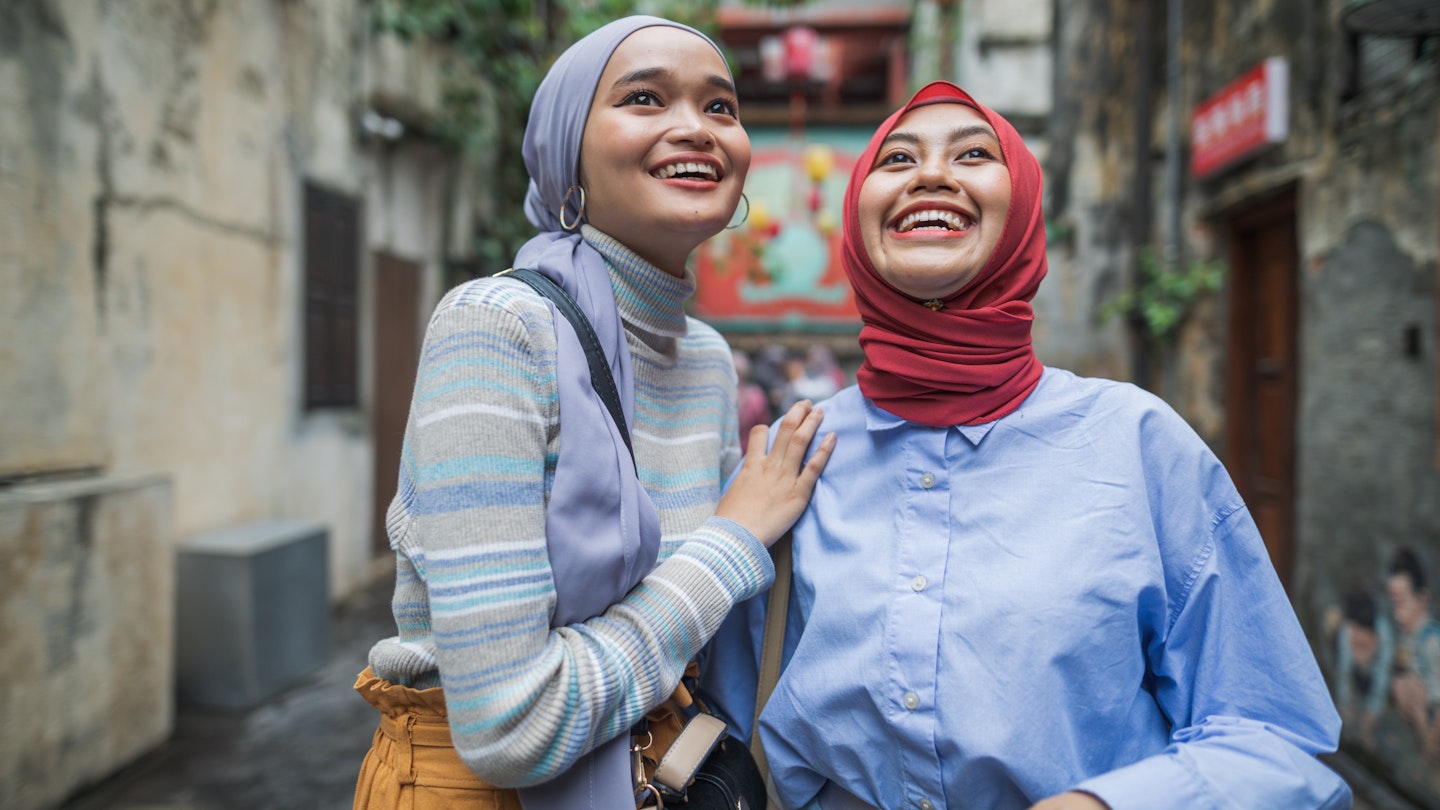
Malaysia is a beautifully diverse country with tons to see and do – here's what you should know before you go © ibnjaafar / Getty Images
Dynamic, multi-cultural, and hugely underrated, Malaysia is Southeast Asia's unsung tropical hero. Marrying tradition, nature and modernity, it's a country of space-age cityscapes, Islamic minarets and gilded Chinese shrines. It's a world where South Indian temples back onto million-year-old rainforests, and this mish-mash can confuse first-timers.
From what to pack to navigating the nation's ethnic and religious tapestry, these are the top things to know before you embark on a trip to Malaysia – an experience that can often feel like being in several countries at once.

1. Malaysia is a dazzlingly diverse country
Be prepared for many types of culture shock. In multi-ethnic yet predominantly Islamic Peninsular Malaysia, a 69.8% majority of Malay Muslims share the land with ethnic Chinese, Tamil Indians and a dozen aboriginal groups categorized as orang asli (original peoples). This means that red lantern-studded Chinese temples sit next to Hindu gopurams (temple gates) and the onion-shaped domes of intricate, modern mosques. Prayers go up to the sky in three main languages – Bahasa Malaysia, Mandarin, and Tamil – and to three main religions: Islam, Chinese Taoism and Hinduism.
A short flight away across the South China Sea, the East Malaysian states of Sarawak and Sabah in Borneo feel like another world. The former has some 26 different ethnic groups, most of whom are Christian or Protestant, while Sabah is home to another 33 who communicate in over 50 languages and 80 dialects .
2. Pack for an eternal summer – but carry a light jacket
Tropical Malaysia enjoys steamy temperatures hovering around 86°F (30°C) year-round. All you really need to pack are light, loose-fitting cotton clothes to best cope with heat and humidity, and a pair of sneakers and flip-flops. If you forget anything, you can pick it up here. Also pack a hoodie or light jacket to prepare for the Malaysian habit of keeping air conditioning to frosty levels, especially inside shopping malls, buses and trains.
3. Technology is widely available…
Kuala Lumpur must be one of the world's most futuristic cities, with ever-expanding highways, towers and skyscrapers eternally contending for space. Beyond the capital, there's excellent 4G mobile network coverage and fast wifi at most hotels and guest houses across the nation. Celcom is the best operator when traveling the Peninsula's jungly interior and Borneo.
4. …but carry cash in the interior
ATMS (cashpoints) are widely available but thin out in the countryside, and they are often hard to find outside of Borneo's main cities. Stock up on the local currency, the Malaysian ringgit, if planning to go off the grid.
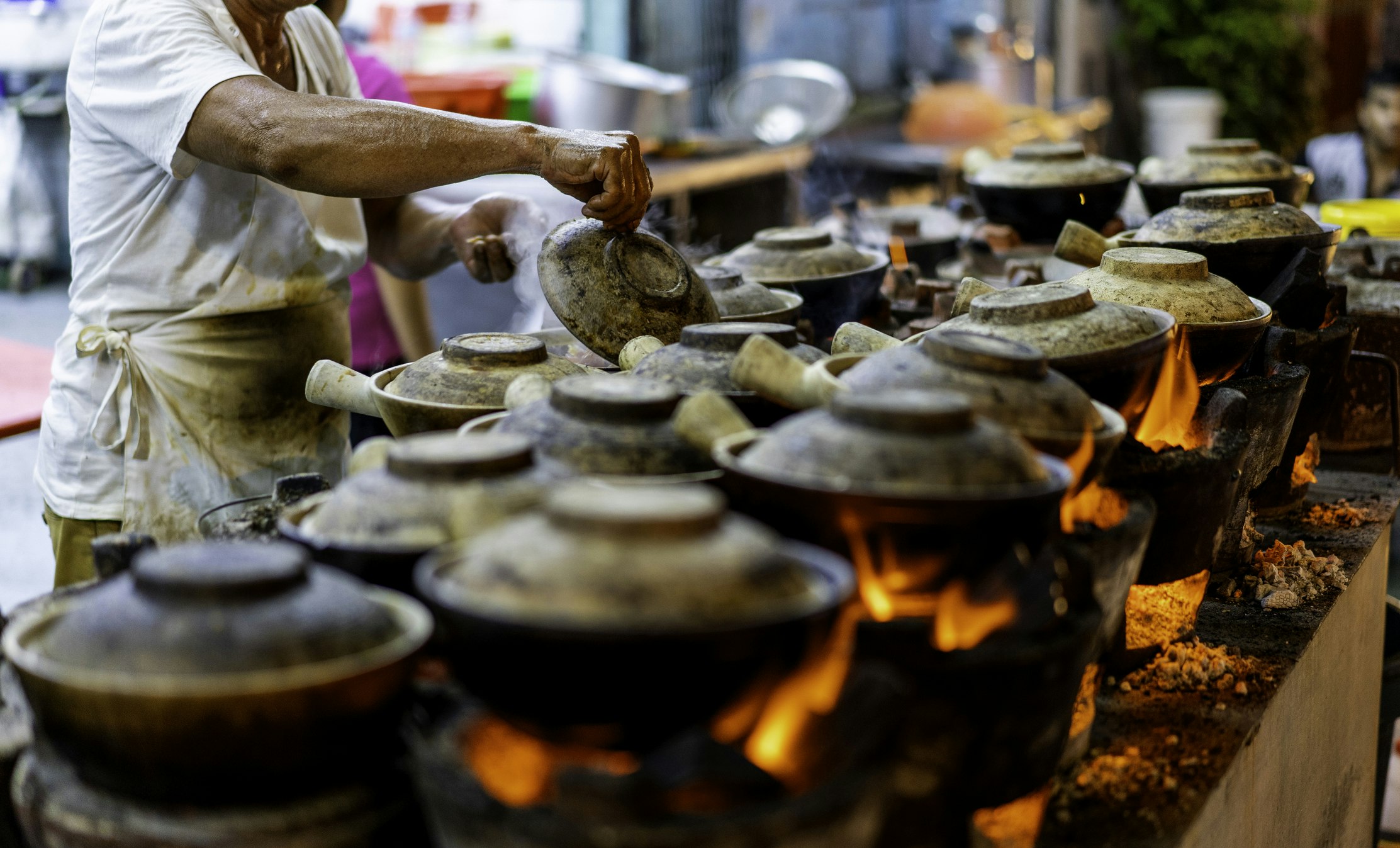
5. The food is something to write home about
The delightfully spicy intricacies of Malaysian food (a concoction of curries, southern Chinese cuisines and pan-Indian dishes that never stop intermarrying) are best consumed fresh off the street, served without embellishments by local "uncles" – slang for older person – on plastic plates.
The alternative is to sit and rub elbows with locals at a food court, or "hawker center" – large open areas, usually covered by a rooftop, packed with simple food stalls squeezed one against the other.
6. Partying is a bit more expensive
Compared to its backpacker-centric Southeast Asian neighbors Thailand , Cambodia and Vietnam , Malaysia is a more expensive party destination because of heavy taxes on alcohol, which is forbidden to Muslims. The rest of the population is free to drink but forced to pay a higher price.
Alcohol is widely available in major tourist cities like Kuala Lumpur, George Town, Ipoh , Melaka and Johor Bahru, while in smaller towns, beer is most often available at Chinese-run businesses. The best antidote to steep drinks and cigarette prices is a visit to the tax-free islands of Langkawi and Tioman .
7. Dress casual but modest
Due to the constant heat, Malaysia's dress code is very casual. Wearing short pants, sandals, flip-flops and t-shirts is the accepted norm everywhere but is considered rude when visiting public offices, where long slacks, close-toed shoes and collared shirts are expected. In Malaysia's many kampung (villages), avoid revealing outfits to comply with local religious sensibilities.
Modesty is also essential when choosing your beachwear. Bikinis and speedos are fine at big hotels, resorts and the tourist islands off the East Coast, such as Pulau Perhentian and Pulau Redang. But it's best to wear one-piece bathing suits and knee-length swimming trunks on any other beach, where the locals dip fully clothed.

8. It's OK to speak in English if you don't know Malay
Picking up some survival Bahasa Malaysia (Malay language), the national lingo, is pretty straightforward – with its Roman alphabet and absence of tones, it's one of the easiest Asian languages to learn. But it's fine to speak English, especially with Malaysian Chinese and Indians, whose mother tongues are not Malay. Blame it on the British colonization, but practically everyone can communicate in English, and most prefer to do so when talking to foreigners.
9. You might be unknowingly rude
When pointing at someone or something, use the thumb and not the index finger, which is considered rude in Malaysia. Always keep your voice down, for raising the tone is an absolute no-no – like asking direct questions, which many Malaysians may take as "losing face" or an invasion of their personal space.
When shaking hands, always remember to use your right hand, for the left is considered "toilet hand" in any Islamic culture. The only dining etiquette that matters in Malaysia is to never use the left hand when trying to eat with fingers like many locals do.
10. Respect nature, and its spirits
When a bunch of foreign tourists bared their bottoms on top of Mount Kinabalu in 2015, enraged Kadazan-Dusun locals blamed their act for the consequent magnitude 5.9 earthquake that killed at least 16 and snapped one of the sacred mountain top's two iconic "Donkey Ear" outcrops.
The animist beliefs that predate the arrival of Islam to the Malay Peninsula have helped foster a highly regarded supernatural world in which nature plays a crucial role. For example, it's common to "ask for permission" before urinating in the jungle, from where locals never bring anything back for fear of piggybacking a curse into their own homes.
Whenever a group enters a forest, it's best to give out nicknames or not call out each other at all – spirits are always listening. The orang bunian (invisible forest-dwelling creatures comparable to elves) can trick hikers and campers into following them deep into the jungle to never be seen again.

11. Call 999 for any emergency
A single three-digit number, 999, connects to the police, the fire department, the ministry of health, the maritime enforcement agency and the Department of Civil Defence. Dial 999 112 if calling from a mobile phone.
12. Boil the tap water
Because of increasing pollution of water sources and aging buildings fitted with rusted pipes, it's always best to boil tap water before drinking, or buy mineral water. Most hotels allow guests to refill their water containers. Carrying a water filtration system or purifying tablets can come in handy when striking out on multi-day hikes.
13. Vaccines are recommended
It is advisable to travel to Malaysia after being inoculated against Hepatitis A, Tetanus and Typhoid. Malaria is generally not an issue in cities and most forested areas, so a prophylaxis is not strictly necessary. Dengue fever occurs sporadically in cities, but as there are no vaccines for it, the best strategy is to not get bitten by mosquitoes – use heavy-duty insect repellent.
Malaysia is one of Asia's top medical tourism destinations and boasts private hospitals equipped with excellent facilities. Make sure to have proper health insurance coverage, or be ready to pay for the premium.
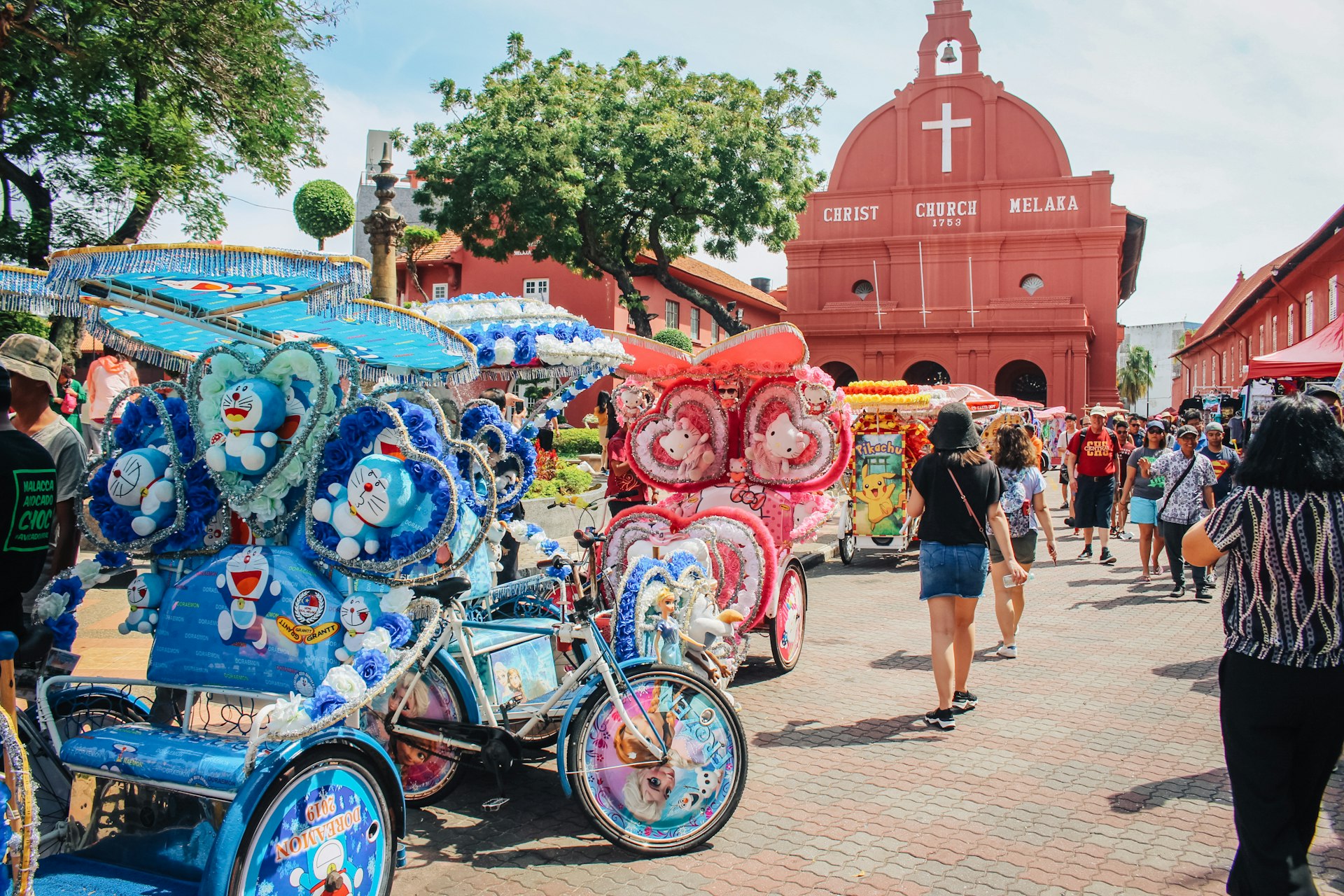
14. Beware of snatch thieves
Traveling in Malaysia is generally a pretty safe experience for travelers of both sexes, but whether they travel solo or in groups, female travelers should pay attention when walking along the busiest roads of capital Kuala Lumpur – keep your bags away from the roadside, for motorbike snatch thieves are well-known to target women, and some attacks have resulted in a victim's death.
15. How to travel safely for LGBTQI+ travelers
While a 2021 court ruling suggests change may be afoot, same-sex relationships are not only taboo in Malaysia, they're banned by federal law. For the LGBTQI+ communities here, the golden rule is to avoid publicizing relationships. In fact, public displays of affection are frowned upon in Malaysia in general, no matter your sexual orientation.
16. Drug offenses can get you to the gallows
Stay away from drugs in Malaysia, where 200g of cannabis, 15g of morphine or heroin, and 40g of cocaine mean a death sentence. Offenders are shaken down extremely hard or jailed even for carrying much less.
This article was first published Feb 27, 2022 and updated Feb 3, 2024.
Explore related stories
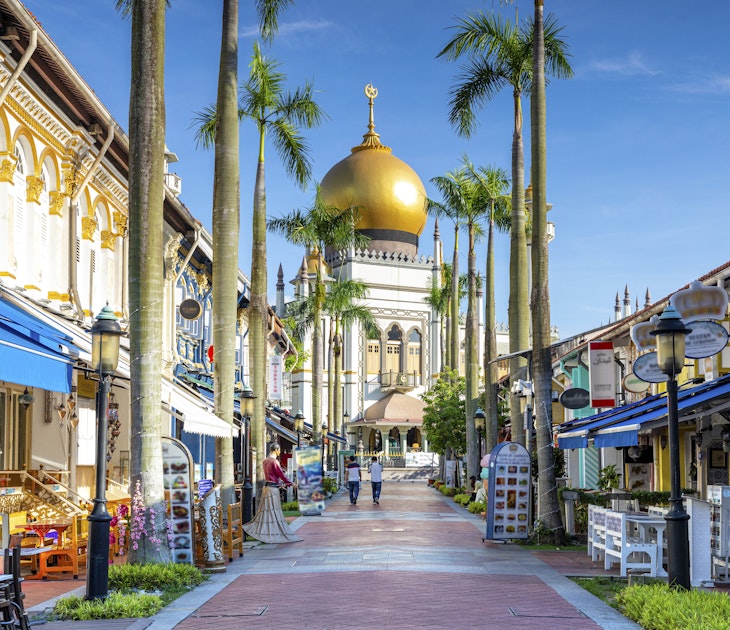
Tips & Advice
Apr 16, 2024 • 12 min read
Singapore's allure goes beyond its iconic hotels, manicured gardens and world-class airport – here are the best places to visit when you arrive.
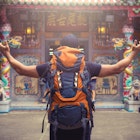
Apr 8, 2024 • 6 min read
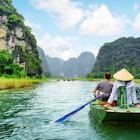
Mar 14, 2024 • 10 min read

Feb 24, 2024 • 8 min read
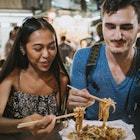
Feb 23, 2024 • 7 min read

Feb 22, 2024 • 5 min read
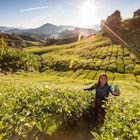
Jan 29, 2024 • 8 min read
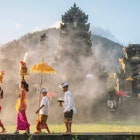
Jan 17, 2024 • 6 min read

Jan 17, 2024 • 8 min read

Jan 11, 2024 • 4 min read

MALAYSIA Travel Guide: Trip Highlights, Itineraries, & Tips
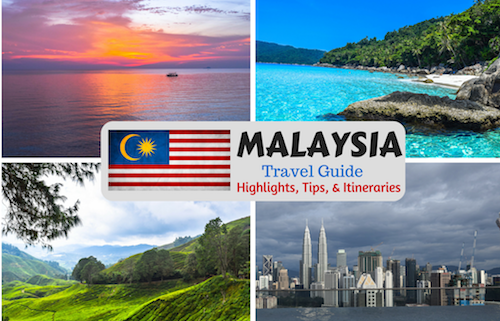
Welcome to Malaysia!
Malaysia is an amazing and diverse country that has something to offer everyone. If you’re looking for amazing food, gorgeous islands, and beautiful landscapes — Malaysia is a destination you should highly consider for your next holiday. I have traveled pretty extensively through Peninsular Malaysia, and it has grown to become one of my favorite countries in entire world! I’ve compiled this Malaysia Travel Guide as a source for people planning trips to this amazing country.
This guide will go over trip highlights, how to get around Malaysia, Malaysia itineraries, and general travel advice!
Hope you enjoy reading my Malaysia Travel Guide and favorite photos from my travels!
Note: This Malaysia Travel Guide will focus entirely on Peninsular Malaysia. I have never traveled to Sabah or Sarawak, and am not too well informed about those areas of the country.
Traveling to Malaysia soon…? I’d definitely recommend purchasing the Malaysia Lonely Planet Travel Guide ! I pretty much always travel with a LP guidebook, and it can definitely a huge asset on the road!
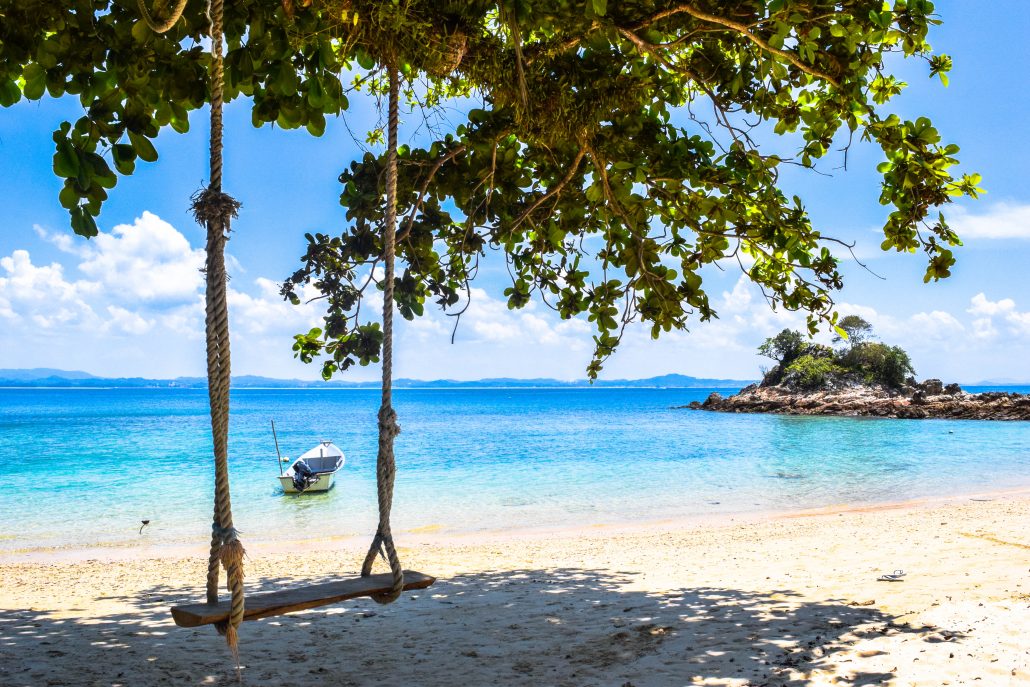
Pulau Kapas, Malaysia
Malaysia Trip Highlights
Kuala lumpur.
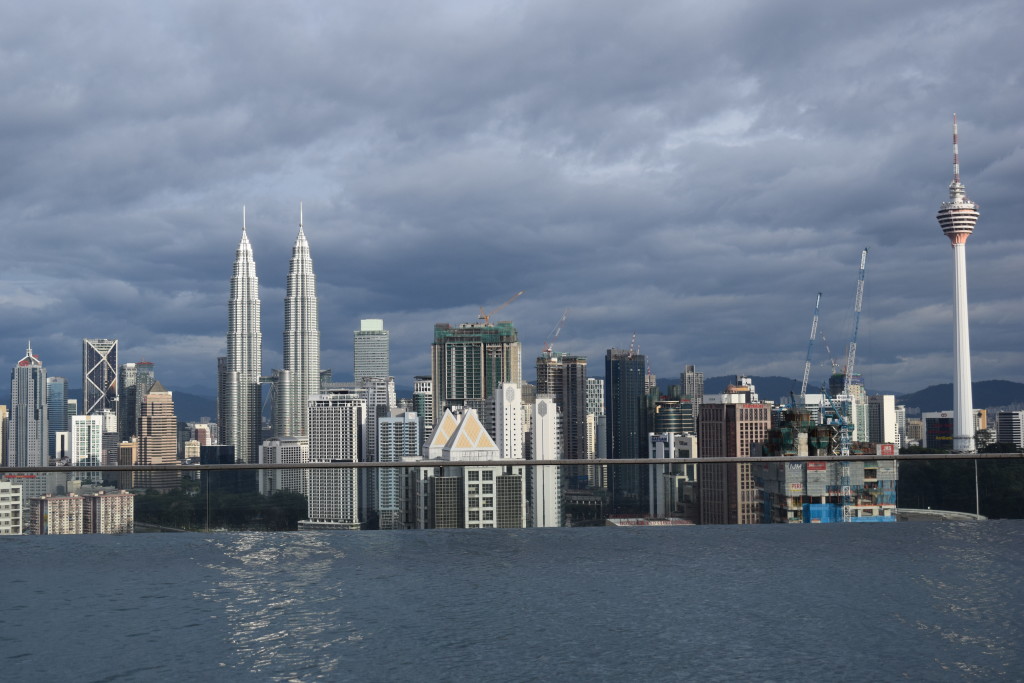
You’ll most likely be starting your Malaysian holidays in the amazing capital city — Kuala Lumpur. This is truly a special place with friendly people, beautiful sights, and delicious food (just like the rest of Malaysia). During my travels in South-East Asia , I was lucky enough to call this city home for awhile. The first time I visited Kuala Lumpur I actually didn’t enjoy the city too much, but after spending more time there I discovered how special the city really is.
Check out the following blog posts I’ve written:
- 10 Amazing Things to do in Kuala Lumpur
- Heli Lounge, Kuala Lumpur; Drinks + Sunset on a Helipad
- The Absolute Best Thing To Do in Kuala Lumpur
TOP KUALA LUMPUR TIP
Sign up for AirBNB , and stay at the REGALIA CONDOMINIUM . I used to live there, and it’s by far the best place to stay in Kuala Lumpur.
It’s luxury complex that has all the amenities you’d want, perfectly located, and has the most amazing infinity pool. There is a mall right next door with a grocery store, movie theater, and tons of other shops. Also, if you sign up for AirBNB with this link , you’ll get $38 off your first visit! Which is easily a free-nights accommodation at The Regalia! Trust me. You want to stay here!
Best Hostel in Kuala Lumpur
Reggae Mansion
Perfect location, amazing rooms, and wildly crazy rooftop parties every night! If you’re backpacking around Malaysia, than you have to stay at Reggae Mansion! This place does sell out, so check rates & availability !
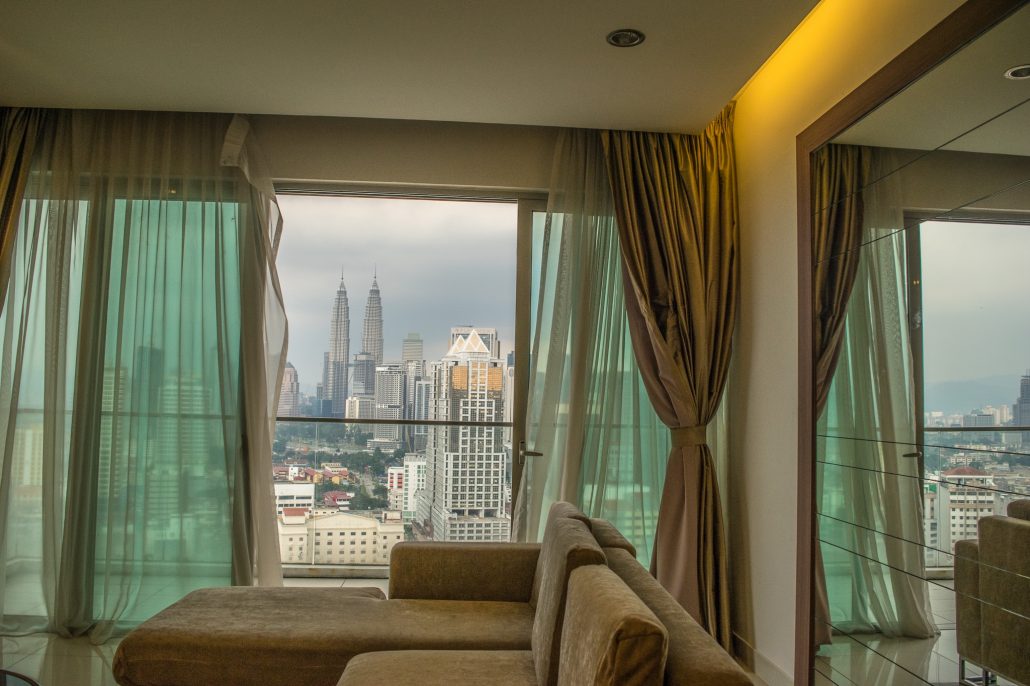
Penang is the cultural hotspot in Malaysia! You’ll fall in love with it’s busy streets, beautiful artwork, and enchanting history. Oh, and the food is absolutely amazing. Most people come to Penang only planning a few day stay, but end up staying much longer than they expected. You can spend a day on Batu Ferringi beach, hike through the National Park, and take the journey up to Penang Hill for spectacular views of the entire city.
Best things to do in Penang:
- Beach day and sunset on Batu Ferringi Beach
- Spend some time hiking through the National Park
- Take a visit to Penang Hill for spectacular views of the city
- Stroll through Georgetown and check out all the artwork
- Eat at Penang’s famous hawker stalls
Best Hostel in Penang
Ryokan Muntri Boutique Hostel : This is a recently opened hostel in Penang,and has excellent affordable rooms, very well-located in George town, and a really cool Japanese theme. It’s got terrific reviews by everyone, and you’ll love your stay here! Check rates & availability .
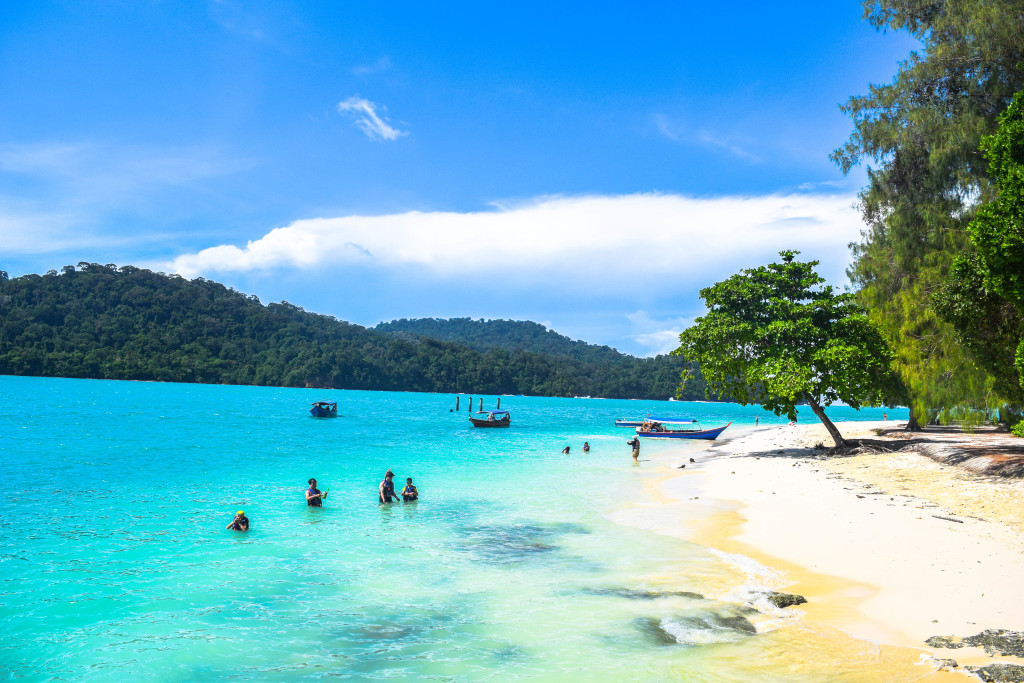
Officially known as Langkawi the Jewel of Kedah, Langkawi is an archipelago of 104 islands in the Andaman Sea, around 30 km off the mainland coast of northwestern Malaysia. It’s right at the border of Thailand, and is a popular place to visit for traveller’s going north/south between Malaysia and Thailand. It is truly an amazing island with amazing things to do, cheap accommodations, tax-free booze, and beautiful landscape.
Check out some of my blog posts on Langkawi:
- A Backpacker’s Guide to Langkawi, Malaysia
- Top 5 Reasons to Backpack Langkawi
- Berjaya Resort Crashing in Langkawi
- Chasing Waterfalls in Langkawi
Best Hostel in Langkawi
Langkawi Dormitorio :
Just footsteps away from the beach, this perfectly located hostel had comfortable rooms, great prices, and an excellent atmosphere! Langkawi Dormitorio .
Cameron Highlands
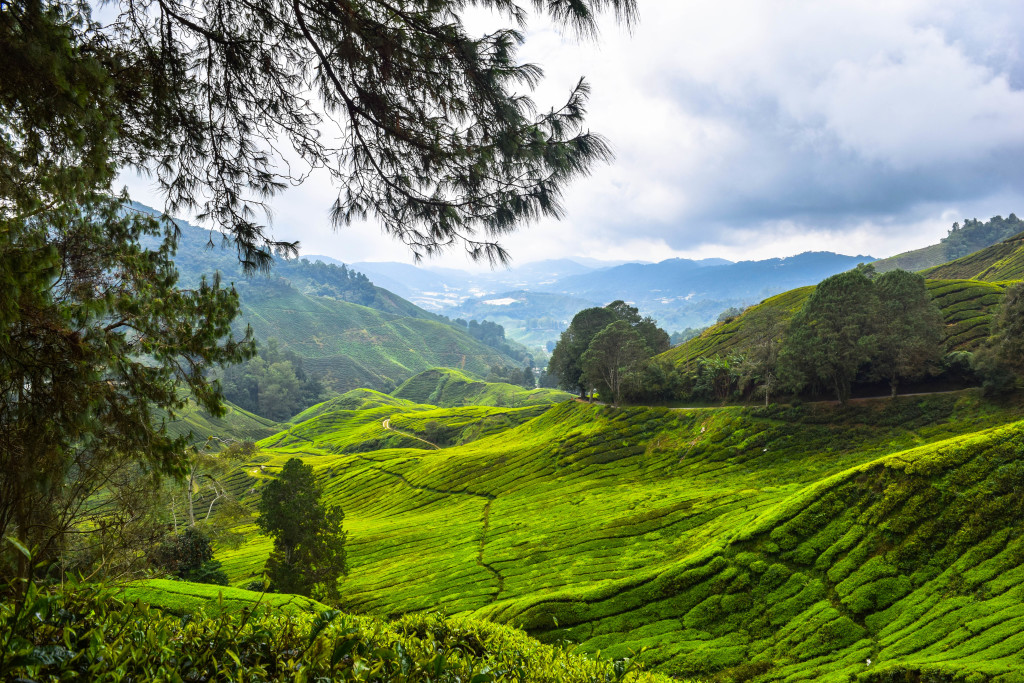
The Cameron Highlands is a stunning hill station in central peninsular Malaysia, and has become a popular destination for visitors in Malaysia. Roughly the size of Singapore, the Cameron Highlands covers a large stretch of land, and there’s tons to see, do, and explore. You’ll fall in love with the beautiful green tea plantations, and will leave you speechless when you visit the highest peak in the Cameron Highlands
For more information on the Cameron Highlands, check out the guide below!
- A Backpacker’s Guide to the Cameron Highlands
Best Hostel in The Cameron Highlands:
CH Traveler’s INN :
A newly opened hostel in the center of Tanah Rata, and simply the best place to stay on a budget for traveler’s visiting the Cameron Highlands! Check rates & availability .
Taman Negara
Teman Negara National Park is the perfect place for travelers who love wild life viewing, jungle trekking, hiking, rock climbing, fishing, camping and many more. It is well established as one of the most popular ecotourism in Malaysia. Popular activities include the canopy walk, jungle trekking, rapid shooting, cave exploration, and boat cruises.
Recommend days spent here: 1-2 days max
Check out the Teman Negara National Park website for more information
The Perhentian Islands
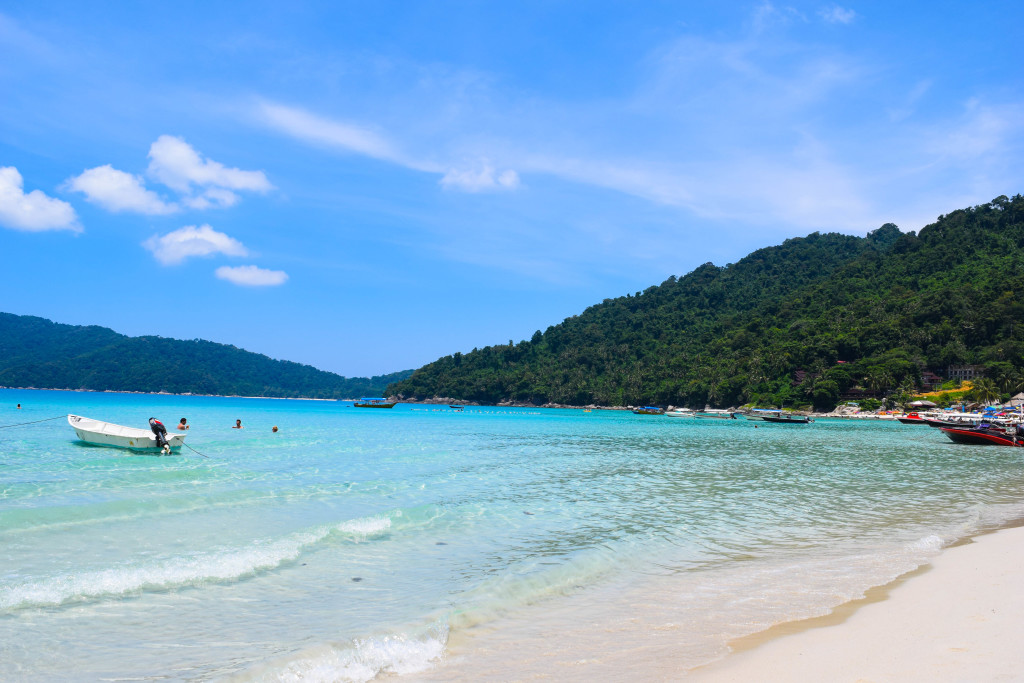
Welcome to paradise. The Perhentian Islands consist of both Perhentian Kecil & Perhentian Besar. They are both absolutely stunning, and the minute you step foot on of the two islands you’ll never want to leave. I’ve visited Perhentian Kecil on two different occasions now, and I definitely would not mind going back for a third. The beaches are gorgeous, the atmosphere is relaxing, and the nightlife can get pretty crazy.
Perhentian Kecil is more for a younger crowd. It’s much more lively at night and has an incredible fireshow. Perhentian Besar has a lot more resorts, and is a bit more family oriented.
If you’re going to Malaysia — you’d be mistaken to skip the Perhentian Islands!
Check out my blog posts on this paradise island!
- A Backpacker’s Guide to the Perhentian Islands
- The Perhentian Islands: Perfectly Picturesque (Photo Essay)
Pulau Kapas
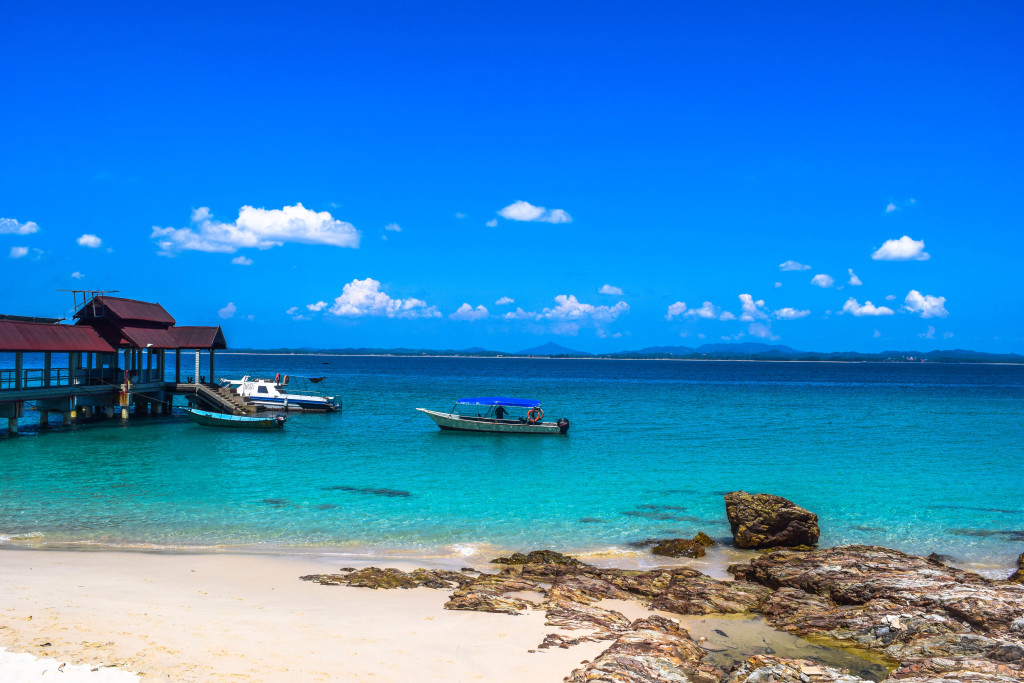
Pulau Kapas is an idyllic island escape for those looking for a bit more of a remote location. You won’t find any big crazy resorts, fast wi-fi connection, or luxury restaurants. What you will be rewarded with is amazingly beautiful water, suburb underwater life, and an extremely laidback atmosphere. Pulau Kapas is truly a Malaysian gem, and I guarantee if you go for a couple days you won’t regret it!
For more information about traveling to Pulau Kapas:
- The Ultimate Guide to Pulau Kapas, Malaysia
- Longsha Beach Camping on Pulau Kapas, Malaysia
- Pulau Kapas: The Most Beautiful Island in Malaysia (Photo Essay)
Tioman Island
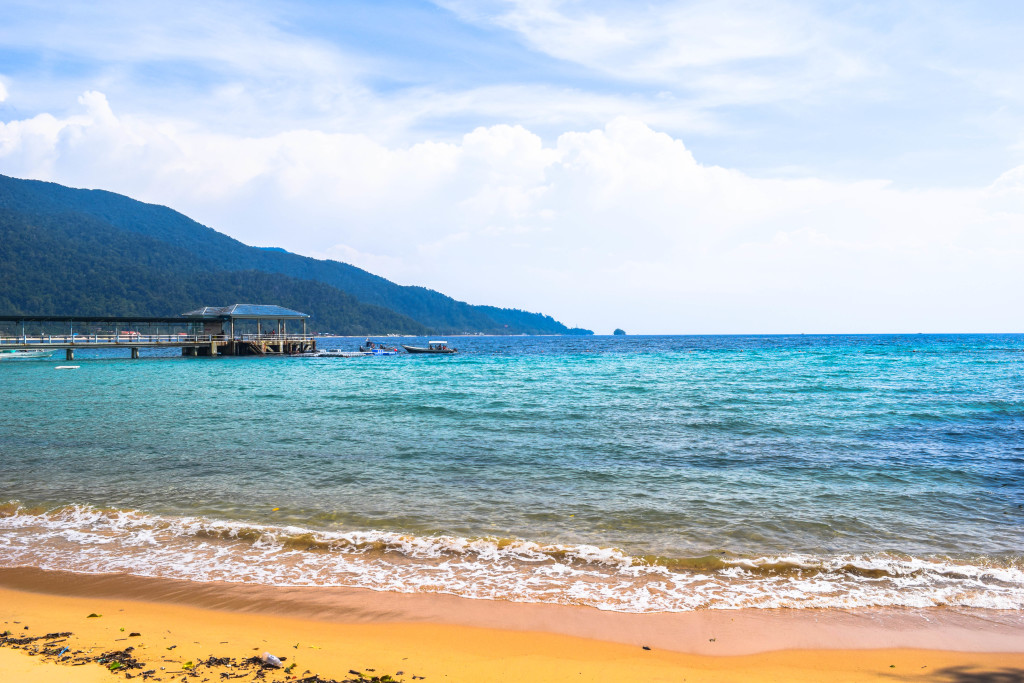
If you’ve looking for some more island action, than definitely make your way over to Tioman Island. It isn’t as gorgeous as the Perhentians or Kapas, but it has some of the best scuba-diving sites in the whole country. The island is pretty massive, and is a 2-hour ferry ride from the mainland. It is a DUTY-FREE island, which makes drinking on this island pretty cheap! It’s a popular destination for weekend trips from Singapore and Kuala Lumpur, so book in advance if you plan on being there on a Saturday & Sunday. If you do plan on going, I’d definitely recommend staying on ABC Beach.
When I was there, I happened to catch really bad weather, and had some transportation issues. I still had a great trip. Read about it below:
- A Weekend Trip to Tioman Island
Melaka is just a short bus ride away from Kuala Lumpur, and can be a great place to spend one night. It’s small enough to walk around, explore, and try some delicious food. There’s not a whole lot to see here, but it’s definitely worth the visit.
To plan your visit, check out this post titled:
- Top 15 Places To See in Melaka
Getting Around Malaysia
The Malaysian transportation is some of the best I’ve found in all of South-East Asia. Prices are relatively low, there’s tons of options, and they are all relatively comfortable.
Flights / Airfare
Malaysia is actually a really easy country to book extremely cheap domestic flights.
- Malindo Air
If you know your exact dates, you can actually get great flight deals. Malindo Air is really great and includes 1 20kh checked bag. These are particularly useful for flights to/from Kuala Lumpur.
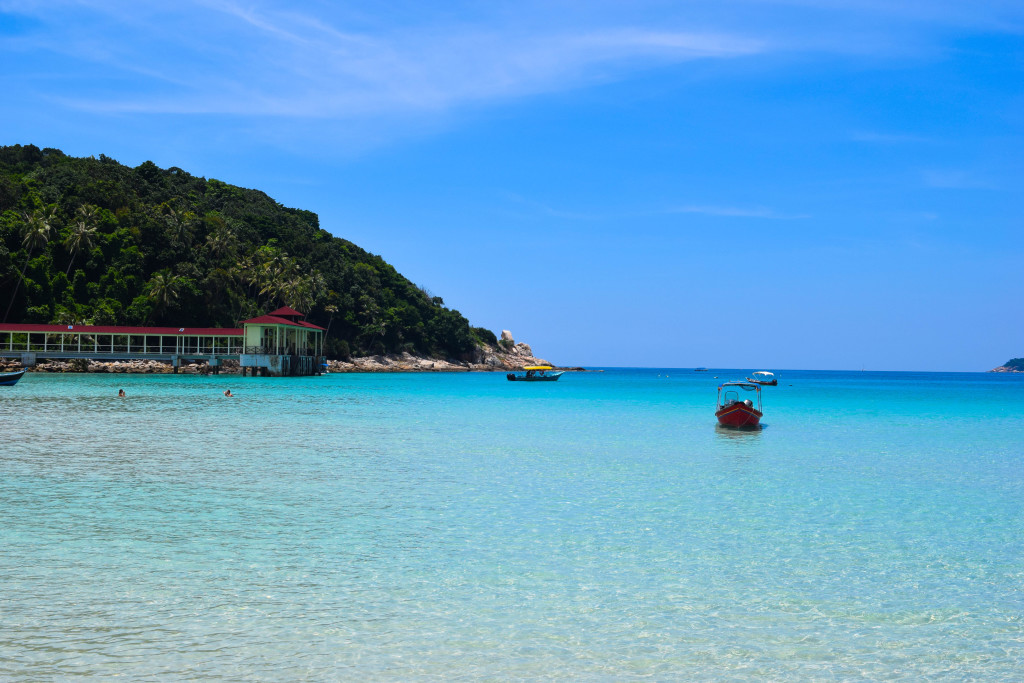
Perhentian Islands
Traveling around Malaysia on the bus transport is actually really easy, budget friendly, and comfortable. There are loads of different companies that offer a ton of different routes. None of the journeys take that long, and the busses can actually be really nice. For bus schedules, routes, and fares, check out the website below. I’ve booked online tickets with them, and made the process extremely easy. You can just show the email confirmation at the bus station, and receive your ticket.
- EasyBook.com
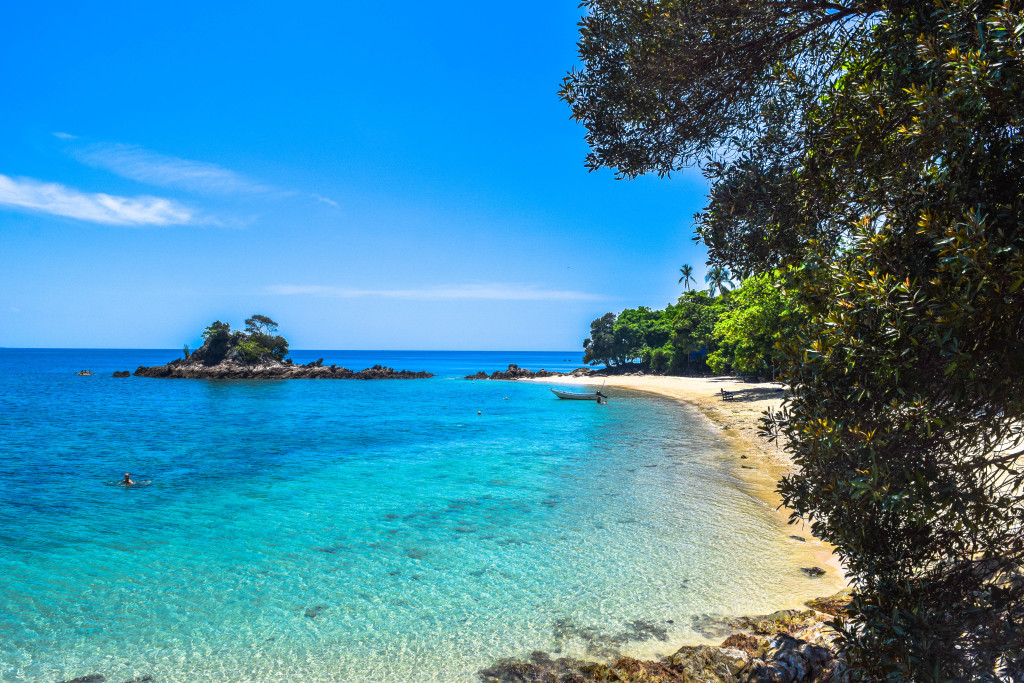
- Hitchhiking in Malaysia
Just like in any destination, you should be careful when hitching a ride alone. With that being said, Hitchhiking in Malaysia can be done, and it’s actually not too difficult. I met these Spanish girls on Pulau Kapas who found a ride all the way from Teman Negara – Kuala Terranganu. It’s not that it saves a ton of money, but it’s a great way to meet some local people, and have a unique travel experience. For more information on Hitchhiking in Malaysia check the website below:
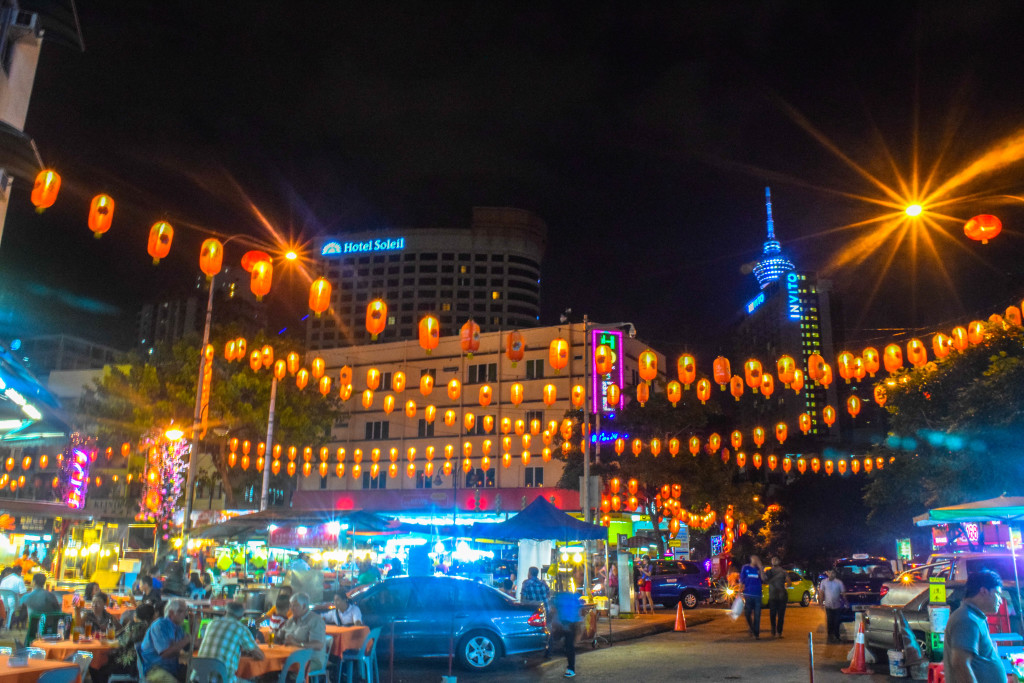
Jalan Alor in Kuala Lumpur
- Trains in Malaysia
I’ve actually never taken a train in Malaysia, but I have heard that the system works out. I almost boarded a train from Penang – Kuala Lumpur, but ended up extending my stay in Penang, and finding a flight that was cheaper than the train! I honestly think that dealing with trains on other routes would just get complicated, so I’d just personally recommend Flights and Busses over taking trains in Malaysia.
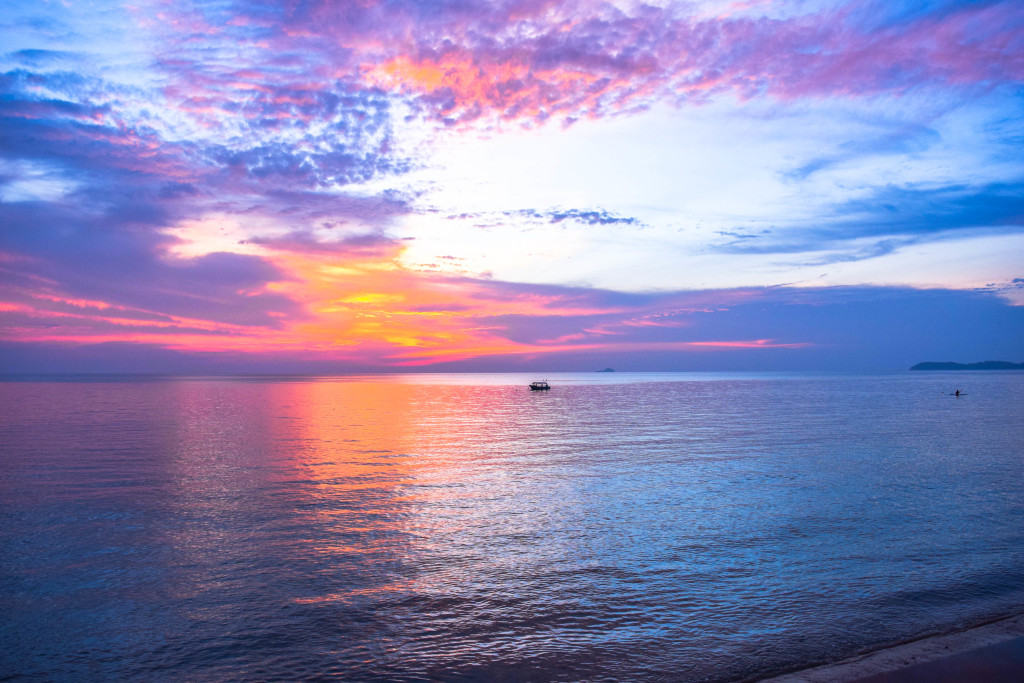
Sunset on Tioman Island
Renting A Car
I’ve never rented a car and explored Malaysia on my own (mainly because I’m a solo budget traveler), but I have had some friends rent a van and go on weekend trips from Kuala Lumpur. It’s definitely not the best option for everyone,
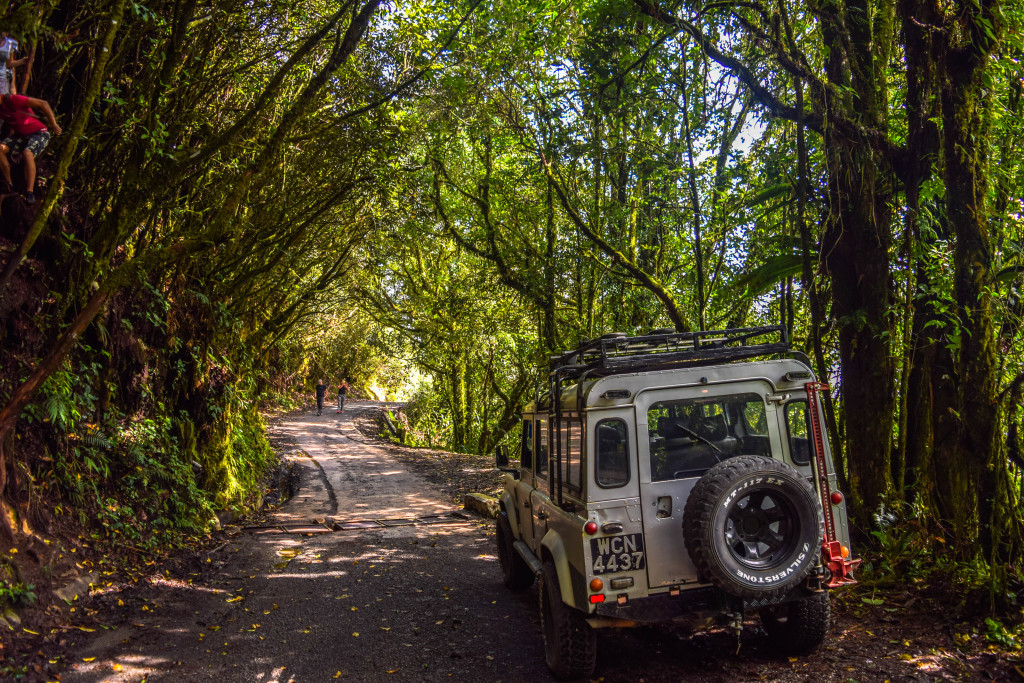
Jeep Excursions in the Cameron Highlands
Malaysia Trip Itineraries
If you look at each of these locations on a map, you can see that it actually fits pretty well
One Week Malaysia Itinerary
If you are only in Malaysia for a brief visit, than you want to enjoy your holiday. My advice would be to enjoy 2-3 days in Kuala Lumpur, and fly to either Penang for 3-4 days. You don’t want to rush around each destination, because you will want enough time to enjoy each place and do all the activities.
Two Week Malaysia Itinerary
Days 1-3 — Kuala Lumpur
Take a morning bus to Teman Negara
Days 4-5 — Teman Negara
Book the early bus ticket to the Cameron Highlands
Days 6-7 — Exploring the Cameron Highlands
Book the early departure bus to Penang
Days 8-10 — Penang
Catch the two hour ferry to Langkawi
Days 11-13 — Langkawi
Catch a domestic flight from Langkawi to Kuala Lumpur
Day 14 // End of Trip — Kuala Lumpur for your outgoing flight..
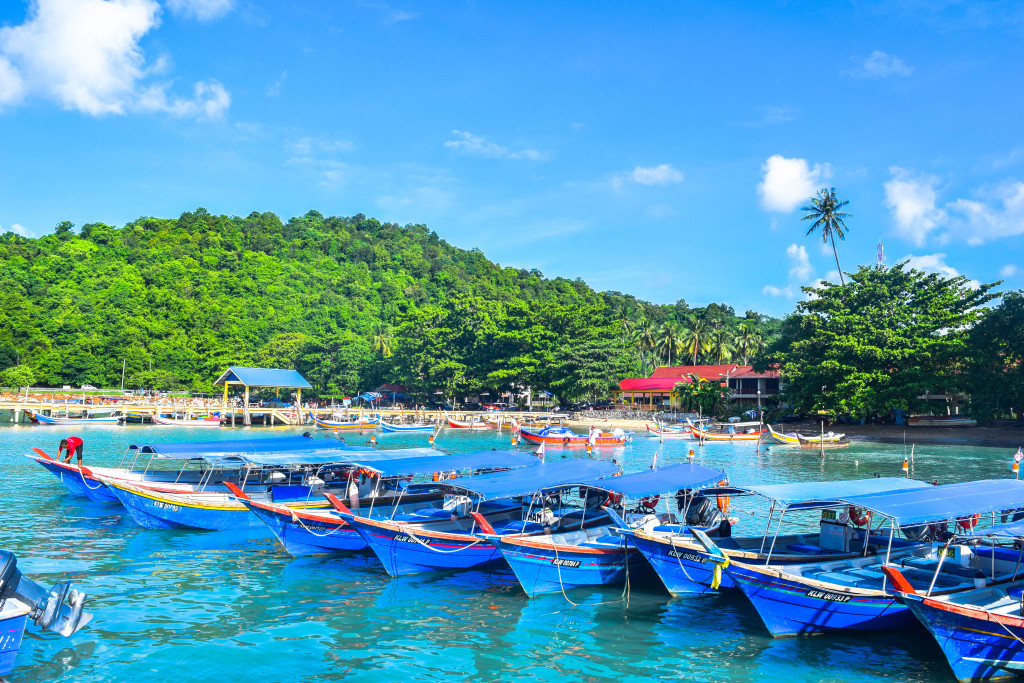
Island Hopping Boats in Langkawi
Three Week Malaysia Itinerary
Book transportation to Marang Jetty for access to Pulau Kapas (Close to Kuala Terranganu)
Days 8-10 — Pulau Kapas & Gem Island
Book early morning boat back to mainland, and get to main bus station. Book transport to Perhentian Islands
Days 11-15 — The Perhentians Islands
Book Domestic Flight from Kuala Terrananu Airport – Penang. Cheap fares available if booked in advanced.
Days 16-17 – Penang
Days 18-20 — Langkawi
Day 21 // End of Trip — Kuala Lumpur for your outgoing flight..
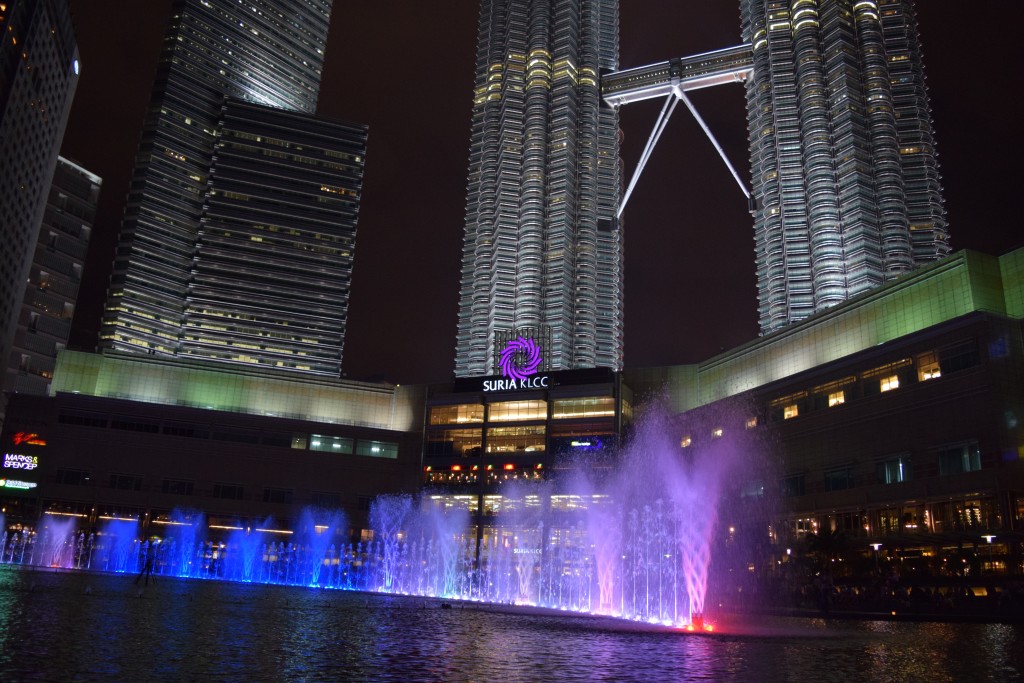
Water & Lights show at KLCC
One Month in Malaysia Itinerary
If you have a full month in Malaysia, I honestly would just recommend to follow the 3-week itinerary, but travel slower. This will also allow flexibility with the domestic flights, and also spending less time on travel. I would also recommend staying in Kuala Lumpur for an extra couple days, and doing a one-day trip to Melaka. If you want to see it all, you can switch up this itinerary to add Pulau Tioman, but I would honestly skip it. I found it to be really touristy, difficult to get to, and there are much better islands and beaches in Malaysia.
If you have even more time in Malaysia, look out for cheap domestic flights over to Borneo. You could scuba-dive off the coasts of the world famous Sipadan island, or hike the highest peak in Malaysia — Mt. Kinabalu!
General Malaysia Travel Advice
Eat as much as you possibly can! The food in Malaysia is absolutely incredible. When you get to Kuala Lumpur, check out a Nasi Kandar and try the various curries, Roti Canai, and Nasi Lemak!
Interact with the locals! Malaysian people are extremely friendly, and generally speak really great English! They are very open and welcome to tourism, and can be a great experience.
Understand you are in a Muslim country! Be respectful with your clothing!
Get a local SIM card! Malaysia has a wide variety of phone plans, and it will come in handy to have 3G / 4G internet when your traveling. I’d recommend Tune Talk. There are great prices and deals, and it’s good coverage.
Download my Free E-Book — 77 Amazing, Helpful, Money-Saving Tips for Backpacking South-East Asia . This goes over a ton of valuable information for Malaysia!
If you haven’t figured it out by reading this post, I have traveled pretty extensively throughout Malaysia. I think it’s an amazing country, and am always thinking about going soon and exploring different parts. I’m actually dying to get over to Borneo, but I’m sure that time will come eventually.
If you’re ever planning a trip to Malaysia, feel free to Contact Me with any questions!
Thanks for reading!
Share the Malaysian Love!
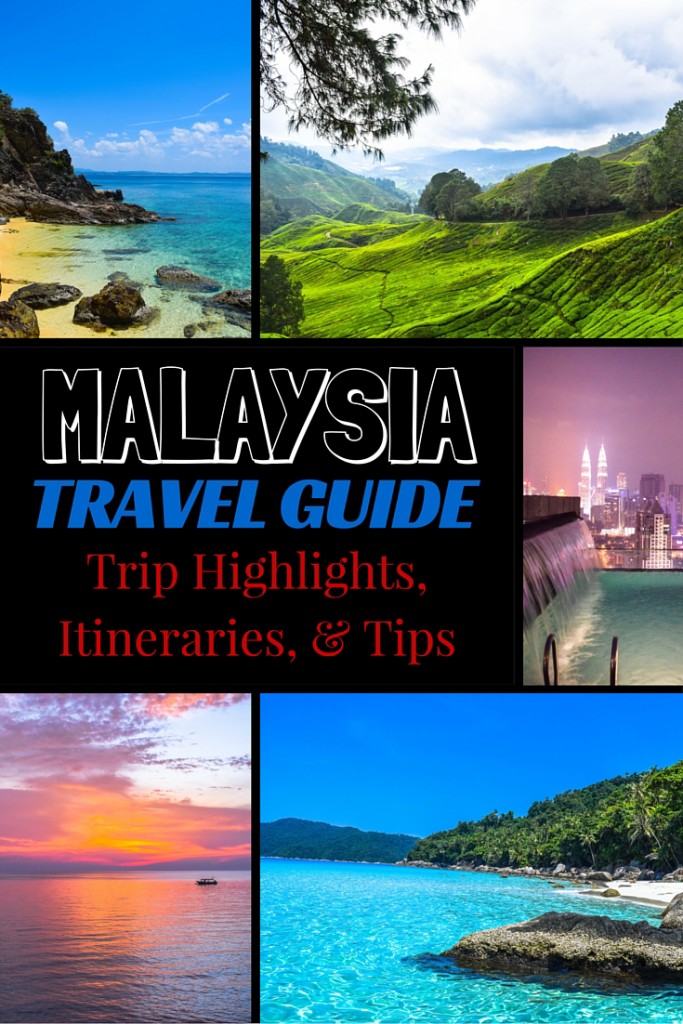
What a great resource! Malaysia is toward the top of my travel list…hopefully I’ll have the time to do the 3 or 4-week itinerary!
Thanks for the great info!
Glad you like it Sarah! :) When you do go to Malaysia, I guarantee you’ll love it! It’s such an amazing country, and so much fun to travel around! Enjoy!
Glad I could help out man! It really is an amazing country! I can’t wait to get back and explore even more.
Thanks for the information. It is really helpful. I am planing to go to Malaysia next month but i only have a week. Perhentian islans sounds like an amaizing place. I am between going there or visit Bali. What do you reckon? Thanks
Regards Gara
Hmm. Bali or Perhentian? Tough Decision. TO be honest, I’d probably choose Bali because you can do a whole lot more in one week. Bali is kinda small, but packed with stuff to do. Perhentian is more of a chill-out, diving destination. Let me know if you have any other questions.
Hello, I am crazy about looking for amazing food, gorgeous islands, and beautiful landscapes ans Malaysia is my dream destination. your blog has very rich content which includes numerous photographs of spots, Island, culture..and many more. Nicely organized and detailed blog.
Thanks so much Jesse! Awesome to hear my site is helping you out! :-)
Hey thanks man for giving this list.I will go Malaysia with my friends in next years.But i don’t know which place to start travel.But after read this i got a brief idea.I will go for 15 days tour.Hope you list will fulfill my journey.Can you give me a list of affordable hotels of Malaysia?
Hey Tina, I normally stayed in hostels because I was a super budget traveler in Asia, lol. I’d just check booking.com and read reviews and everything. :-)
Hi if u wanna come to malaysia and need me to guide you just whatsapp me – +601129293631 or dm me on instagram @hakimzakaria98
What an awesome blog! I’m heading to KL tomorrow from Sebah, I only have a week and at abit of a loss with figuring out what i can squeeze in and what not to miss. This is really helpful, so much info all in one place.
Thankyou! :)
So happy to help! Enjoy Malaysia! :-)
Hi! I’m Thien from Vietnam. I was in Malaysia a couple of years ago. Your sharing strongly reminds me of my traveling experiences when in Malay. Thanks greatly for that!
Would you like to try out some wonderful places in Vietnam? Check out this Things to do in Vietnam for various useful suggestions.
Hope that you can visit and explore our country one day.
Wow! Nice post! I love KUALA LUMPUR in Malaysia. It is my favorite place! Me and my Keymalaysia team already visited there!
Been in love with Malaysia ever since our first visit. Their beaches and rich culture is outstanding! Definitely coming back soon. So many more islands and sites to explore. Such a detailed and informative post you have! Kudos!
Hey, this blog is so helpful!!
We’ve got 2 weeks in Malaysia, we’d like to go to Penang, Langkawi, Perhentian Kecil, Pulau Kapas and of course Kuala Lumpur which we fly in and out of. Could you give me any info on how to get from each place please?
Any advice would be great thankyou!
Do u have a travel agency ? or just a traveler ?
Nice Malaysia Travel post author. Thank you. Keep it up.
Nice post author.Thank you.
I adore Malaysia – the beaches, food, street art and culture is the best, not to mention the scuba diving! Your guide has inspired me to return when I can, thanks Jones!
Thanks so much for this! Very useful guide
Trackbacks & Pingbacks
[…] Check out this Malaysia Travel Guide to help you plan your […]
[…] ex-pat community, surprisingly great nightlife, and excellent travel options from KLIA Airport. Traveling Malaysia is one of my best memories while in South-East Asia, and I’m definitely planning on moving […]
[…] If you’re visiting Malaysia, here are some Malaysia travel tips! […]
[…] I would not necessarily read about in guide books or find on other blogs. As of now, I am using Jones’ Malaysia Travel Guide as a rough source. I hope to spend about three to four weeks here later this year so there’s […]
[…] Malaysia Travel Guide: Trip Highlights, Destinations, & Itineraries […]
Leave a Reply
Leave a reply cancel reply.
Your email address will not be published. Required fields are marked *
Save my name, email, and website in this browser for the next time I comment.
Photography Gear
Work With Me
Privacy Policy
Destinations
Music Festivals
Travel Itineraries
Inspiration
Travel Gifts
Southeast Asia
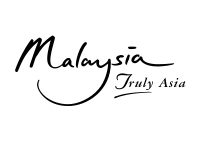
- About Malaysia
- Travel Ideas
- Deals & Packages
- Travel Alert
- Events & Happenings
Pulau Rawa, Johor
Isle of charm, kuala lumpur skyline, kuala lumpur by day.

Craft Shopping
Take home a part of malaysia, genting highlands, pahang, take a wild ride.

Travel around to experience the remarkable treasures and the hidden gems in Malaysia. Each state offers a unique Malaysian experience for all.
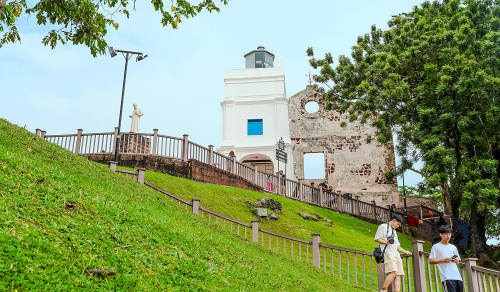
St Paul's Hill & The Church of St...
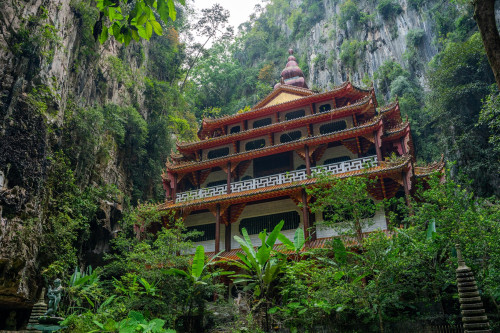
5 Stunning Cave Temples to Visit in Ipoh
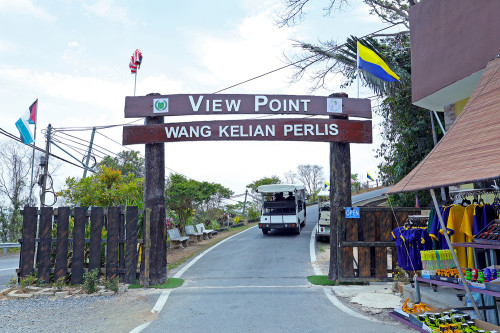
Wang Kelian

Indulge in an awe-inspiring adventure of a lifetime. Enjoy fun times with your family, explore the wilderness and taste the mouth-watering cuisine of Malaysia.
Island & Beaches
Culture & heritage, food & drinks, city excitement, nature & adventure.
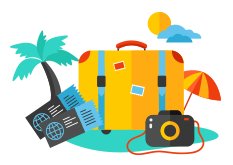
Check out a vast selection of deals and packages from authorised agents.
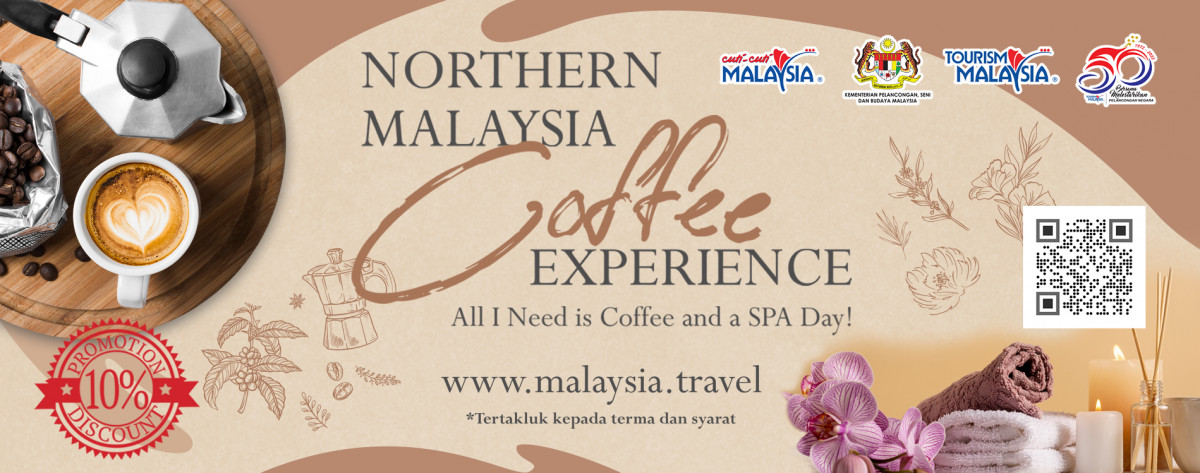
Be informed about Malaysia as a travel destination.


Category: Malaysia
- #194 – Exploring UNESCO World Heritage Sites in Asia: Part 2.
- April 15, 2024
- Tagged as: Cambodia , Indonesia , Malaysia , Singapore , Thailand , UNESCO , World Heritage
When we travel, many of us hope to experience an exotic culture or visit a spectacular natural attraction. Often these are chosen based on recommendations from family and friends or may be long-awaited bucket list destinations. Little do many of us know, however, that the United Nations has already selected more than 1000 such sites, hundreds of which are in Asia. These World Heritage Sites are some of the most impressive destinations on Earth, and we’ll discuss some today that you may wish to consider adding to your next Asian adventure, on our second episode about UNESCO World Heritage Sites in Asia.
- Adventure Travel
- Nature & Wildlife
- Travel Tales
#187 – Trevor’s First Trip to Asia
- January 1, 2024
- Tagged as: travel tales , Trevor Ranges
One’s first trip to Asia. It’s something few forget. The smells, the sounds, the crowds, big cities, wild landscapes, exotic food, a sometimes frenetic pace, tropical beaches, incredible mountains – you’re in Asia! We recently got chatting about our early trips to the continent, started to feel old, or perhaps well-experienced, and thought it might be fun to recount our initial journeys here. Reflect on those initial impressions and contrast it to our current lives and how we see things now. In these two parts, Scott then I will recount their first visits to Asia. Here we go for part 2…
#124 – Animal Tales: Experiencing Animals in Asia
- May 15, 2021
- Tagged as: Asia animal podcast , Asian Animals , Experience Animals in Asia
Experiencing animals in Asia can be one of the most interesting parts of your travels. The animals you will encounter while traveling in Asia are often exotic: certainly different from the animals found in most visitor’s home countries. From elephants to street dogs, you’re bound to have at least a couple interesting animal encounters and experiences as you travel through Asia (and a few animal tales to take home as souvenirs). After living in the region collectively for more than four decades, Scott and Trevor have had some fun, at times unnerving, and often unique animal experiences in Asia, which they share on this week’s episode of Talk Travel Asia podcast: Animal Tales: Experiencing Animals in Asia.
#122 – Monkey Tales: Scott & Trevor’s monkey stories from Asia!
- April 15, 2021
- Tagged as: monkey podcast , Where to see monkeys in Asia
Visiting areas of Asia with monkeys can be very exciting. As monkeys are such intriguing creatures, people often consider them to appear friendly, especially if they’re not scared of humans. These monkeys usually expect people to give them food, whether the humans want to or not and they can be very cheeky if not dangerous in certain circumstances. Want to hear Scott and Trevor’s monkey stories? Listen to our Monkey Tales episode now!
- Food & Drink
- Places to Stay
- Travel Advice
#116 – Hidden Travel Gems in Asia
- January 15, 2021
- Tagged as: Asia Travel Podcast , Hidden Gems in Asia , where to find the best places in asia
Here on Talk Travel Asia podcast, we explore a variety of destinations across Asia, including the things to do and see, where to eat and shop, and even where to stay. Sometimes these are up-and-coming places, often they are off-the-beaten-track, and once in a while well-trodden, but almost always they are worth a look and certainly deserving of conversation. And then there are the many other places that are sometimes discovered by accident, perhaps on a fourth visit, or because a friend in-the-know put us on to it. These hidden gems are often the most memorable. While risking putting some of our favorite hidden gems on travelers’ radar, we’re willing to take the risk.
- Top 10 Lists
#114 – The Best Beaches in Southeast Asia
- December 15, 2020
- Tagged as: best beaches asia podcast , Best beaches in Asia , Best beaches in Cambodia
Welcome travel lovers. On this episode of Talk Travel Asia podcast we’re getting seriously tropical with what we believe are the Best Beaches in Southeast Asia. We’ve done other episodes about beaches in Asia, including Episode 11 – Asia’s Somewhat Secret Beaches , but this time we’re going to touch on some of our favorites we’ve been to in the region. Many listeners in the west are going into winter and no doubt getting cabin fever so we thought this would provide a nice tropical escape.
- Entertainment
- Expert Insight
#88 – Favorite Watering Holes in Asia II: our favorite bars in Asia.
- October 1, 2018
- Tagged as: best bars in bangkok , best bars in phnom penh , favorite bars in asia , favorite bars in cambodia , favorite bars in thailand , favorite places to drink in asia , stuart mcdonald , Talk Travel Asia podcast , travel guide southeast asia , travelfish.org , whats the best southeast asia travel website , where to drink in Asia

Continue reading →
Episode 68: Wild & Wacky Asian Experiences
- September 16, 2017
- Tagged as: Asia Podcast , Crazy Bangkok , Crazy museums thailand , Shooting guns Cambodia , Snakefarm Thailand , Talk Travel Asia , Waterparks Thailand
Culture shock is certainly something that occurs when traveling abroad. Here in Asia there are many curious customs and holidays that are so different what we experience at home. We actually did an episode on Interesting Asian Holidays (Episode 62 ). On this episode we talk about some wild and wacky experiences and attractions in Asia, some of which we have experienced and some of which we have not…yet. Continue reading →
- Responsible Travel
Episode 66: Animal Tourism in Asia
- August 15, 2017
- Tagged as: Animal Attractions Asia , Animal Experiences Asia , Elephants Asia , Scott Coates , Tigers Asia , Travel Asia Podcast , Trevor Ranges
First off, this is not a podcast about attractions and activities your dog or cat could enjoy while he or she is on holiday in Asia. While that would be fun, this is about how you can experience animals as a tourist in Asia. Some are good, some are bad, but all can be contentious as animal rights are something we care passionately about but are not always taken as seriously in Asia as they are in certain countries with more strict enforcement.
Episode 60: Best of Asia
- January 2, 2017
- Tagged as: Asia Podcast , best Bangkok movie theater , Best beaches in Asia , Best in Asia , Best in Southeast Asia , Best in Thailand , best restaurants in Asia , Cambodia , Scott Coates , Talk Travel Asia podcast , train travel in Asia , Travel Podcast , travel to Thailand , Trevor Ranges
Happy New Year – it’s 2017 and our gift to you is a celebratory episode of Talk Travel Asia. Today we’ll revel in our very favorite things about Asia in a multitude of categories from how to get around to where to imbibe and a whole lot in between. We take on a variety of categories from best transport, to airports, best movies theaters and a whole lot in between. This is our Best of Asia from more than 33 collective years living and traveling in the region. Ring in the New Year by celebrating travel and get planning your trip to Asia for 2017!
- Travel Trends
Episode 56: Asia Then & Now
- November 1, 2016
- Tagged as: Angkor , greg jorgensen , Scott Coates , Talk Travel Asia podcast , Travel Podcast , travel to Cambodia , travel to Laos , travel to Luang Prabang , travel to Thailand , Trevor Ranges , whats Krabi like , whats Luang Prabang like
The only thing that stays the same is that things are constantly changing and that’s nowhere more true than in rapidly developing Asia. Scott & Trevor talk about how places change, sometimes for the better, sometimes for the worse, but they always change. Often it’s your memory that’s not accurate too and the people you were with, mood you were in, etc, can impact how you remember a place. On this episode of Talk Travel Asia podcast, Trevor and Scott talk about how a number of places in Asia that they know well have changed over the years, both for good and for bad.
- Philippines
Episode 48: Snorkeling & SCUBA Diving in Southeast Asia
- July 5, 2016
- Tagged as: Asia Podcast , diving asia , diving bali , greg jorgensen , Scott Coates , snorkel bali , snorkel thailand , snorkeling asia , Talk Travel Asia , Talk Travel Asia podcast , Thailand scuba , Travel Podcast , travel to Cambodia , Trevor Ranges
Many parts of Southeast Asia are famous for snorkeling and SCUBA diving. There are few parts of the world with as many great areas to get your face and body under the water than over here in the tropics. Countries including the Philippines, Thailand, Malaysia, and Indonesia, in particular, have world-class snorkeling and diving sites. If you’re thinking of getting your open water certification, want to get dives in, or love snorkeling, Southeast Asia is the place. Today we’ll chat about our favorite locations to get in and under the water and share tips from some of our friends. Get ready to get wet! Continue reading →
Recent Posts
- # 196 – How Asia has had a lasting impact on co-hosts Scott & Trevor
- #195 – Harry Mitsidis, ‘The World’s Most Traveled Man’ on his travels to Tajikistan
- #193 – Sri Lanka’s Tamil-majority provinces with Ryan Ver Berkmoes
- #192 – Royal Palaces of Asia with Ed & Greg from Bangkok Podcast

Malaysia Travel Guide
Last Updated: September 2, 2023
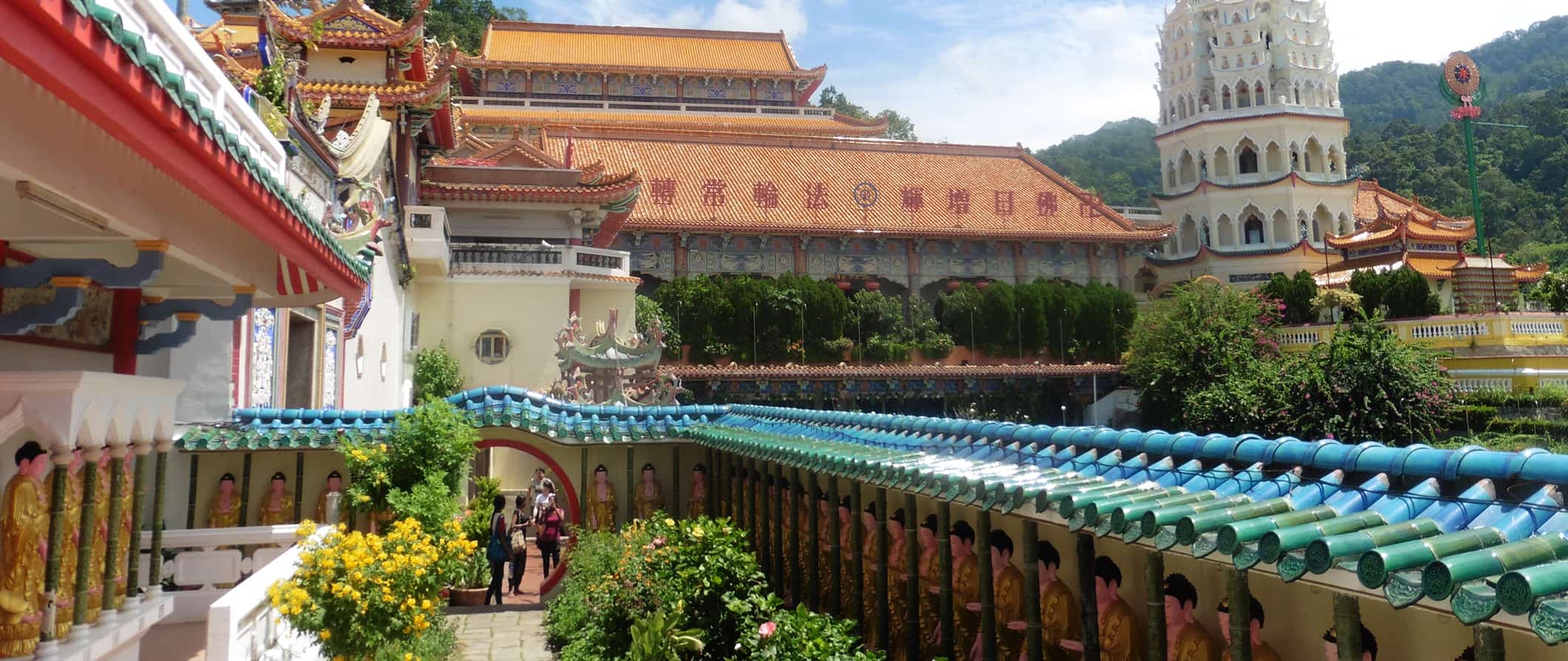
Malaysia is one of the most underrated destinations in Southeast Asia . While the country does see a fair share of backpackers, it sees only a fraction compared to popular neighbors Thailand, Cambodia, and Vietnam.
In my opinion, people are missing out.
From the dense urban jungle of Kuala Lumpur to the pristine beaches of the Perhentian Islands , from the jungles in the interior to the delicious food, Malaysia has a ton to offer travelers.
Explore tea plantations in the Cameron Highlands , trek through the vast national parks of Gunung Mulu and Taman Negara, and admire incredible wildlife, including tigers, elephants, sun bears, and more.
Or head to Borneo to look for wild orangutans, hike through the rainforest, and marvel at the knife-sharp peak of Mount Kinabalu.
All too often, travelers breeze through Malaysia on their way to places like Thailand or Singapore. I’d encourage you not to make that same mistake as there is a ton to see and do here — and it’s all super affordable.
This Malaysia travel guide will give you the best places to visit, help you save money, and ensure you make the most of your time in this incredible destination!
Table of Contents
- Things to See and Do
- Typical Costs
- Suggested Budget
- Money-Saving Tips
- Where to Stay
- How to Get Around
- How to Stay Safe
- Best Places to Book Your Trip
- Related Blogs on Malaysia
Click Here for City Guides
Top 5 things to see and do in malaysia.
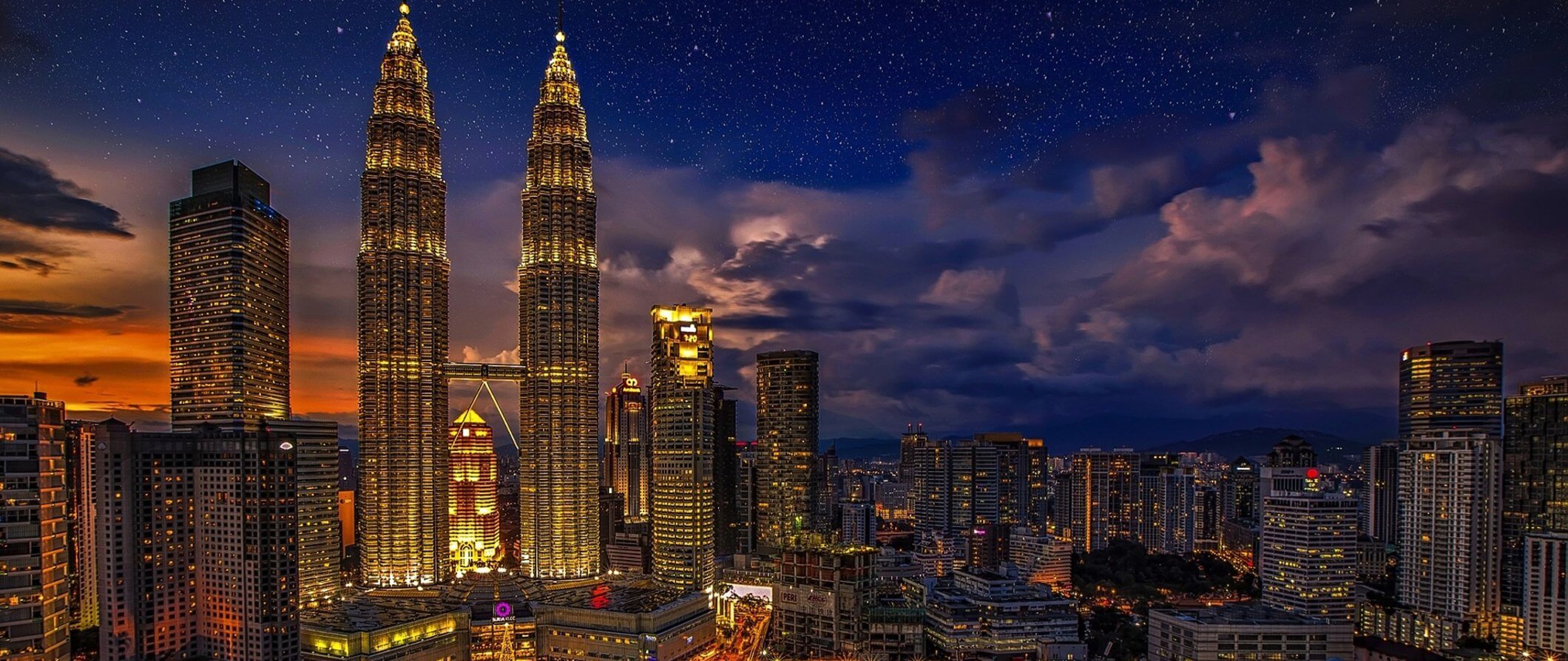
1. Visit Kuala Lumpur
Chances are you’ll be spending at least a few nights in Malaysia’s capital, Kuala Lumpur . Visit the iconic Petronas Twin Towers, see the famous Sri Mahamariamman Temple, explore the Batu Caves, and see the colorful butterfly garden. It’s a great foodie city too.
2. Dive in the Perhentian Islands
These islands are hugely popular with snorkelers and divers because of their reefs and crystalline waters filled with a wide variety of coral, turtles, sharks, and reef-fish. They are getting more popular every year but are a beautiful respite from the tourist-packed islands in Thailand.
3. Visit George Town
George Town is Malaysia’s most enchanting city, with Chinese temples next to mosques and colonial British Raj architecture amongst modern skyscrapers. George Town’s crisscrossing streets teem with bustling shops, historic buildings, and busy cafes.
4. Hike Mount Kinabalu National Park
Mount Kinabalu is Malaysia’s tallest mountain and a popular hiking trek in which you make your way through dense jungle to reach the summit. Admission is 15 MYR, a climbing permit is 200 MYR, and mandatory insurance is 7 MYR. There are only a set amount of permits allowed per day and you must make go with a guide so plan ahead!
5. Tour the tea plantations
Other things to see and do in malaysia, 1. go wildlife spotting.
Malaysia has a rich diversity of wildlife. Orangutans, Malaysian tigers, Monitor Lizards, and Sumatran Rhinos are all indigenous to the country (Borneo and Sumatra and the only places in the world with wild orangutans). Malaysia’s national parks and wildlife reserves are the best places to go to see wildlife, including Taman Negara and Bako National Park. For Orangutans, go to Borneo. Most day tours cost under 500 MYR, while multi-day tours start around 1,500-2,650 MYR.
2. Dive Sipadan Island
Sipadan Island is one of the world’s best dive sites. The famous French explorer Jacques Cousteau declared the island an “untouched piece of art” — and he wasn’t wrong! Barracudas, manta rays, hammerhead sharks, whale sharks, and greenback and hawksbill turtles fill these crystal waters. Only 176 permits to dive at the island are issued each day, costing 140 MYR per person. The resorts (located on neighboring islands) each get a specific number of permits per day and require divers to stay with them for a few days, diving the surrounding areas, before they can get a Sipadan permit. A 3-dive package at Uncle Chang’s, a budget-friendly dive lodge, costs 550 MYR.
3. Explore Taman Negara National Park
At an estimated 130 million years old, Taman Negara is the oldest rainforest in the world. You can embark on the world’s largest canopy walk, take a 4×4 safari to look for elephants and tigers, go spelunking, or visit some Orang Asli villages (belonging to the country’s Indigenous peoples). Admission is 1 MYR, and 5 MYR if you want to take photos within the park.
4. Relax at Pulau Langkawi
Featured in thousands of different magazines, websites, and articles, Pulau Langkawi is a picturesque retreat on an archipelago of more than 100 islands made up of white sandy beaches and endless sunshine. Pantai Cenang is the most popular beach area, especially for its strip of restaurants, bars, and shops. For something slower, visit some of the area’s traditional villages, go snorkeling at Payar Island, or check out the Telaga Tujuh Waterfalls on the northwest side of the island. This is one of the best places in the country to relax, soak up the sun, and enjoy a slower pace of life.
5. Go whitewater rafting
Outside of diving, Malaysia is also known for its challenging whitewater rafting conditions. You can find all grades of rafting on the rivers here, and prices start around 200 MYR for a half-day excursion. Kuala Kubu Bharu River and Ulu Slim River are two popular options.
6. Understand Malaysia’s colonial roots
Malaysia has a tumultuous colonial past. The country was annexed by the Portuguese, Dutch, and British before finally gaining independence. For a deeper understanding of this history, visit Malacca (Melaka). Located just two hours from Kuala Lumpur, the city center was declared a UNESCO World Heritage Site in 2008 and the Baba & Nyonya Heritage Museum offers an in-depth overview of Malaysia’s colonial past. Admission to the museum is 16 MYR.
7. Tour Borneo
Just to the east of Malaysia is Borneo, the third-largest island in the world and home to some of the most diverse rainforests on the planet. Pair that with unlimited wildlife viewing opportunities (including endangered orangutans and proboscis monkeys), and rich Indigenous culture, and you’ve got the makings of a once-in-a-lifetime trip. If you’re an experienced climber, you can also climb Mount Kinabalu, the highest mountain in Malaysia at 4,095 meters (13,400 feet) high.
8. Visit the temples
Malaysia has countless beautiful Hindu and Buddhist temples scattered all around the country. Some of the most impressive temples include the Batu Caves (Kuala Lumpur), Sri Mahamariamman (Kuala Lumpur), Thean Hou (Kuala Lumpur), Arulmigu Balathandayuthapani (George Town), and Sam Poh Tong (Ipoh). As most temples are still practicing centers of worship, appropriate dress is required to enter. Admission is always free.
9. Dine on street food
Malaysia’s mix of cultures means that there’s an incredible variety of delicious and cheap street food to enjoy here. Markets and roadside stalls are great places to pick up hawker food and dine on a budget. Kuala Lumpur, Jalan Alor, Little India, and Chinatown all have tons of inexpensive food stalls with prices starting at 2-4 MYR. You can also take a street food tour to dive in-depth into food culture and history for around 260 MYR.
10. Celebrate Deepavali
Deepavali is the Hindu festival of lights and is one of the biggest Hindu celebrations in Malaysia. Also known as Diwali, Dipavali, Dewali, Deepawali, or the Festival of Lights, it’s celebrated in October or November for five days. Traditionally, people host open houses, light candles, have fireworks displays, and serve Indian delicacies. In Kuala Lumpur, the biggest celebrations are in Brickfields (Little India).
11. Go jungle trekking
Don’t miss out on exploring Malaysia’s lush landscapes and dense forests while you’re here. The Cameron Highlands are a great place to go trekking, with 14 trekking routes heading out from the main town of Tanah Rata. Most of the hikes lead to waterfalls and scenic views, but if you want a more challenging trek, you’re required to hire a guide and obtain a permit. Eco Cameron Tours offers 4-hour group tours for 80 MYR per person, including a visit to the famous Mossy Forest (a lush forest with ferns, moss, orchids, and a pedestrian boardwalk).
12. Shop at the markets
Indoor and outdoor markets, operating both morning and night, are everywhere in Malaysia. You can get everything at the markets, from prepared food and produce to clothing and souvenirs. They’re also a great way to experience local culture. Don’t be afraid to barter and haggle – it’s what the locals do! If you don’t want to shop, come here to people-watch and take in the local pace of life.
13. Visit Masjid Negara
Malaysia’s national mosque, this huge house of worship in Kuala Lumpur has the capacity to hold 15,000 people. Opened in 1965, its bright blue star-shaped dome represents the 13 states of Malaysia and the five pillars of Islam (over 60% of Malaysia is Muslim). Non-Muslims are welcome to visit the National Mosque outside of prayer time. Be sure to dress modestly, although there are robes available to put over your clothing as well. It’s free to enter.
14. Help the sea turtles
Malaysia’s islands are great places to see turtles, either by diving, snorkeling, or volunteering. In the Perhentian Islands, the Perhentian Turtle Project accepts volunteers for multi-week stays from April to September. A two-week volunteer program costs 3,621 MYR, with food and accommodation. All money raised goes toward helping the turtles, who face extinction due to climate change, habitat loss, and pollution.
For more information on specific cities in Malaysia, check out these guides:
- Cameron Highlands Travel Guide
- Kuala Lumpur Travel Guide
- Perhentian Islands Travel Guide
Malaysia Travel Costs
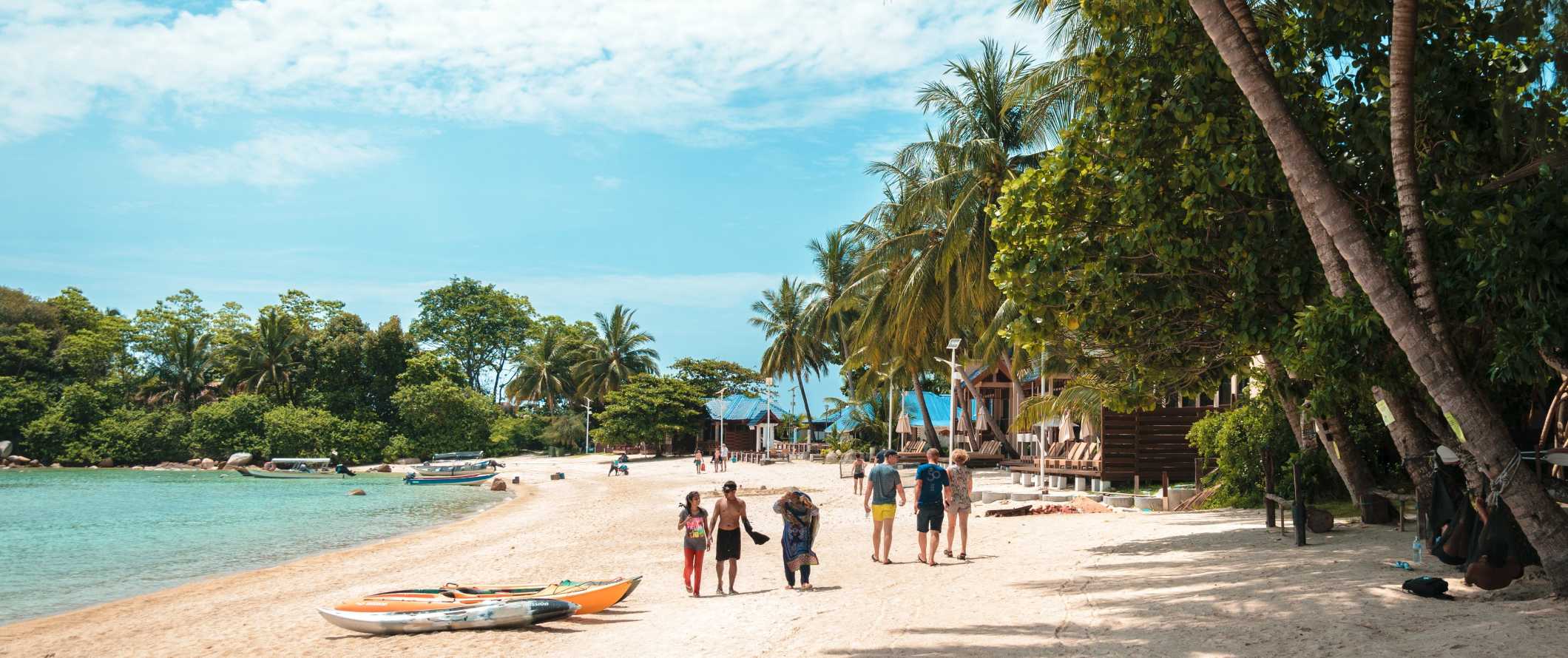
Accommodation – A bed in a 4-6-bed hostel dorm costs 35-70 MYR per night. A bed in a room with 10 or more beds can cost as little as 20 MYR per night. Popular destinations like the Cameron Highlands and Perhentian Islands are on the higher end of the spectrum. A private hostel room costs around 105-130 MYR per night. Free Wi-Fi and free breakfast are common, though most hostels do not have kitchens if you want to cook your own food.
Camping is popular in places like Taman Negara and the Cameron Highlands as a way to save on accommodation costs. Expect to pay around 10-35 MYR per night for a basic plot without electricity.
Budget hotels with free Wi-Fi, air conditioning, and free breakfast start around 75-90 MYR per night. For a three-star hotel with more amenities (such as a swimming pool), expect to pay closer to 200-300 MYR per night.
Airbnb is available throughout the country, mainly offering entire homes and apartments catering specifically to travelers. These start at 100-160 MYR per night.
Food – Malaysian cuisine, like the country itself, features a mix of cultures. China, India, Indonesia, Thailand, and Singapore have all influenced the country’s dishes. Rice or noodles are the basis of most dishes, and seafood and fish feature prominently, especially on the islands and coastal areas. As a Muslim-majority country, chicken and beef are common and are usually halal. Popular vegetables include cabbage, bean sprouts, lotus root, sweet potatoes, taro, and long beans.
The unofficial national dish is nasi lemak , fragrant rice cooked in coconut milk, flavored with pandan leaf, and accompanied by different sides, usually served for breakfast. Other popular Malaysian dishes include roti canai (a sweet or savory flatbread), ikan bakar laksa (spicy noodle soup), and many different regional fried noodle and fried rice dishes.
Steamboat (known in other countries as hot pot), a method of dining in which you cook meat and vegetables in a boiling pot, is popular as well.
Street food (like stuffed pancakes, skewers, and bowls of noodle soup) is the cheapest and most delicious way to eat in Malaysia. Each dish costs only 5 MYR-15 MYR. Snacks like skewers cost 2-6 MYR.
You can expect to pay 10-20 MYR for a meal in a Malaysian restaurant, including food like nasi lemak and rojak (chopped fruit and dough). Simple dishes like fried noodles or a bowl of soup are no more than 13-17 MYR each.
Fast food (think McDonald’s) costs around 14 MYR for a combo meal, but other western meals can be double or triple that. Pizza, burgers, or pasta can cost up to 50 MYR.
A beer costs 13-17 MYR and a glass of wine is 20-27 MYR. Cocktails are pretty expensive at 20-45 MYR so I’d skip them if you can. A cappuccino is 8-12 MYR.
A week’s worth of groceries costs between 90-150 MYR for basic staples like rice, noodles, seasonal produce, and some meat or fish. Stick to local food items, as western specialties like wine and cheese will destroy your grocery budget.
Backpacking Malaysia Suggested Budgets
If you’re backpacking Malaysia, my suggested budget is 115 MYR per day. This budget covers staying in a hostel dorm, eating street food, taking public transit to get around, skipping alcohol, and sticking to mostly free activities like walking tours, hiking, and relaxing on the beach.
A mid-range budget of 295 MYR per day covers a private Airbnb or private hostel room, drinking more, taking the occasional taxi to get around, eating street food and the occasional sit-down meal, and doing more paid activities like museum visits, food tours, and diving.
On a “luxury” budget of 520 MYR or more per day, you can stay in a hotel with a pool, eat at restaurants for all your meals, have more drinks, visit the islands, and do whatever tours and activities you want. This is just the ground floor for luxury though. The sky is the limit!
You can use the chart below to get an idea of how much you need to budget daily. Keep in mind these are daily averages – some days you’ll spend more, some days you’ll spend less (you might spend less every day). We just want to give you a general idea of how to make your budget. Prices are in MYR.
Malaysia Travel Guide: Money-Saving Tips
A little goes a long way in Malaysia, but it’s still easy to wreck your budget here if you splash out on fancy meals and tours. Here are some ways you can save money in Malaysia:
- Barter with your taxi driver – Taxis aren’t usually metered in Malaysia (even though it’s required in bigger cities like Kuala Lumpur), so make sure to agree on the fare before you set off. Ask your hotel/hostel staff what you should pay so you don’t get ripped off.
- Camp – It’s possible to camp in places like Taman Negara and the Cameron Highlands to save on accommodation. Expect to pay around 10-35 MYR per night for a basic plot.
- Eat the street food – Street stalls are the place to go for delicious hawker food and meals that cost just a few bucks. The street food is the best food in the country — and the cheapest!
- Don’t drink – As Malaysia is a Muslim country, drinking is frowned upon, but it does happen. However, to restrict it, the authorities have made drinking very, very expensive so skip the booze.
- Take a free walking tour – A free walking tour is a great way to explore Kuala Lumpur on a budget. You’ll not only get to see the sights, but you’ll connect with a local guide who can share their insider tips and advice.
- Travel in the off-season – Traveling during the monsoon season (late November to mid-February) is an easy way to save money on flights and accommodation. With significantly fewer visitors, everything is cheaper. To avoid the worst of the rains, skip the east coast.
- Use Grab – Grab is like Uber and often cheaper than both taxis and tuk-tuks, especially if you’re getting a ride from the airport in Kuala Lumpur. Just download the app and go!
- Escape the city – Much of the popular areas in Kuala Lumpur are designed for tourists and can be expensive. Skip the crowds and head to somewhere like Pataling Jaya, a smaller nearby city that has all the perks of KL with none of the downsides.
- Pack a water bottle – The tap water here isn’t always safe so bring a water bottle with a filter with you to avoid buying single-use plastic. My preferred bottle is LifeStraw , which has built-in filters to ensure your water is always clean and safe.
Where to Stay in Malaysia
Looking for budget-friendly places to stay? Here are my suggested places to stay in Malaysia:
- Kitez Hotel & Bunks (Kuala lumpur)
- Sunshine Bedz Kuala Lumpur (Kuala lumpur)
- Birdnest Collective Cafe & Guesthouse (Kuala lumpur)
- The Bed Klcc (Kuala lumpur)
- Ryokan Muntri Boutique Hostel (Penang)
- Traveller Bunker Hostel (Cameron Highlands)
- Westwood Highland (Cameron Highlands)
- De’Native Guest House (Cameron Highlands)
- Hikers Sleep Port (Cameron Highlands)
- Anis View Perhentian (Perhentian Islands)
- Senja Bay Resort (Perhentian Islands)
- Besut Guesthouse (Perhentian Islands)
- Akinabalu Youth Hostel (Kota Kinabalu)
How to Get Around Malaysia
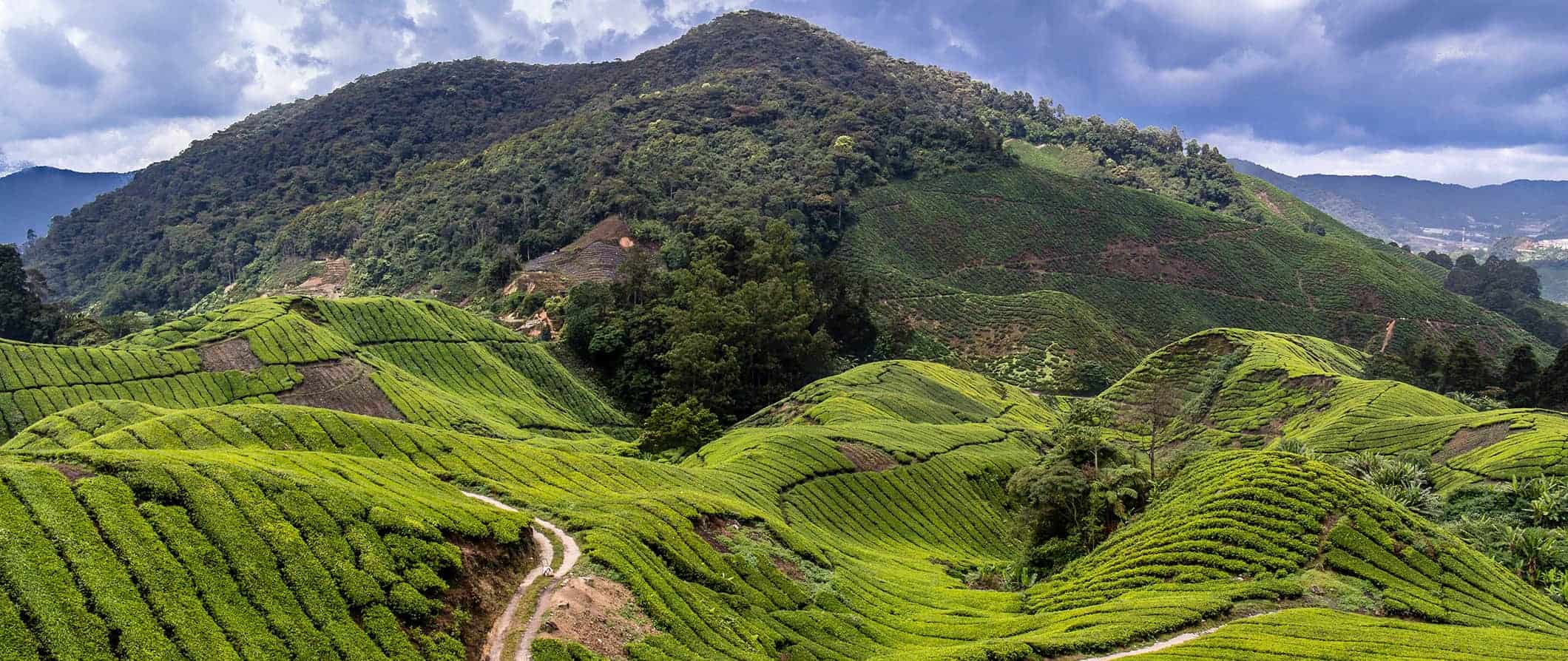
Public transportation – Most cities in Malaysia have excellent public transport, especially Kuala Lumpur with its buses, light rail, commuter rail, and monorail that all connect every part of the city. A ride costs between 1-15 MYR. If you plan on mostly using public transit, pick up a Touch ‘n Go (TnG) card to use on all modes of public transportation, saving 20% per ride. You can also load unlimited transit passes onto this card.
In Kuala Lumpur, try to use the free GO KL City Bus. It’s a free service that covers most of the tourist hotspots, like Bukit Bintang and Chinatown.
Other cities, like George Town (Penang), are full of city buses that run all over the island. The KOMTAR complex and the Weld Quay jetty are the two primary bus stations. You’ll have to tell your driver where you’re headed, but a typical one-way fare is 2-7 MYR. There are also free buses that go to significant sites in the city, just look for buses labeled “Free CAT Bus.”
Bus – Buses are an easy and efficient way to get around Malaysia. Expect to pay around 5-15 MYR per hour for a bus trip. The main bus companies include:
- Transnasional
Aeroline and Super Nice are high-end services that come with air-conditioning and sometimes even meal service, but they’re still affordable. The 5-hour bus from Penang to Kuala Lumpur costs around 35-45 MYR, while the 3-hour bus from Kuala Lumpur to the Cameron Highlands costs about 44 MYR.
Train – Mainland Malaysia has 1,849 kilometers (1,149 miles) of rail, with the main line connecting Singapore to Kuala Lumpur to Thailand.
There are two types of service: express trains, which are air-conditioned and have three different classes; and local trains, which usually only have economy class and are much slower than the express trains. All are operated by Keratapi Tanah Melayu (KTM), the national railway service.
You can use the KTMB.com.my website to look up schedules and to book tickets. Reservations open 30 days in advance.
A train from Kuala Lumpur to Butterworth (where you’d catch the ferry to Penang) costs 66 MYR, while the 2.5-hour journey from Ipoh to Kuala Lumpur is 30-45 MYR.
In East Malaysia, there is a round-trip sightseeing train that runs from Kota Kinabalu to Papar, with a stop in Kinarut. The North Borneo Railway runs the entire trip, and it takes four hours. The cost is 345 MYR, which includes breakfast and lunch.
Flying – The two leading domestic airlines in Malaysia are Malaysia Airlines and AirAsia. Kuala Lumpur’s airports receive the most flight traffic, followed by Kota Kinabalu and Penang. There are several smaller airports around the country as well.
A flight from Penang to Kuala Lumpur can be found for as little as 100 MYR, while a flight from Kuala Lumpur to Bangkok ranges between 220-600 MYR. Flights between Kuala Lumpur and Kota Kinabalu cost around 225-300 MYR.
Hitchhike – It is common for people to hitchhike in Malaysia, and the locals are eager to pick up travelers. HitchWiki has additional information on hitchhiking in Malaysia.
When to Go to Malaysia
Malaysia’s two peak seasons occur from the start of December to the end of January, and then from June to mid-September. The first tourist peak season occurs during Hari Raya Puasa (Eid al-Fitr), which celebrates the end of Ramadan. Check ahead to see when this occurs as the dates vary every year. Malaysia’s Muslim population celebrates by taking the week off so your travels could be disrupted if businesses are closed.
Late November to mid-February brings the arrival of the northeast monsoon, affecting much of the east coast with heavy rainfall. September and October are the wettest months on the west coast, with downpours sometimes going on for hours. This is also true in mountainous areas like the Cameron Highlands.
Overall, the best time to visit is from March to early November when it’s drier and less humid. Visiting just after the rainy season isn’t a bad idea either, as it’s still warm, the countryside is lush and full of waterfalls, and tourism is still not overly busy.
Temperatures do not fluctuate much across the country. The daily average is 22-32°C (73-90°F), while in the hills the temperature averages 21°C (67°F). Humidity is high year-round.
How to Stay Safe in Malaysia
Malaysia is safe place to backpack and travel — even for solo travelers and solo female travelers. Violent attacks against foreigners are rare.
Petty theft (including bag snatching) is the most common type of crime in Malaysia. When out and about, always keep your valuables secure and out of reach just to be safe. This is especially important in crowded tourist areas and on busy public transportation. Don’t leave anything valuable unattended at the beach either.
Solo female travelers should feel comfortable here, though walking alone a night should be avoided just to be safe.
There are some common scams here, especially in Kuala Lumpur, such as taxi drivers trying to rip off passengers. Make sure the meter is on or negotiate your fare before getting in a taxi (or take a Grab to avoid this altogether).
If you’re worried about getting ripped off, read about common travel scams to avoid here .
If you are eating out, keep your backpack on your lap or place your foot or a chair leg through your strap. That will prevent would-be thieves from snatching your bag quickly while you’re busy eating.
When out in nature, don’t feed the monkeys! They get aggressive and are not afraid of people. Do not approach monkeys quickly or give them treats, as they grab anything within reach.
If you experience an emergency, dial 999 for assistance.
Additionally, avoid tap water unless you have a water bottle with a filter. Travelers should also note that Malaysia is a modest country, so revealing outfits attract more attention. To be safe and blend in, dress conservatively.
Always trust your gut instinct. Make copies of your personal documents, including your passport and ID. Forward your itinerary along to loved ones so they’ll know where you are.
The most important piece of advice I can offer is to purchase good travel insurance. Travel insurance will protect you against illness, injury, theft, and cancellations. It’s comprehensive protection in case anything goes wrong. I never go on a trip without it as I’ve had to use it many times in the past. You can use the widget below to find the policy right for you:
Malaysia Travel Guide: The Best Booking Resources
These are my favorite companies to use when I travel. They consistently have the best deals, offer world-class customer service and great value, and overall, are better than their competitors. They are the companies I use the most and are always the starting point in my search for travel deals.
- Skyscanner – Skyscanner is my favorite flight search engine. They search small websites and budget airlines that larger search sites tend to miss. They are hands down the number one place to start.
- Hostelworld – This is the best hostel accommodation site out there with the largest inventory, best search interface, and widest availability.
- Agoda – Other than Hostelworld, Agoda is the best hotel accommodation site for Asia.
- Booking.com – The best all around booking site that constantly provides the cheapest and lowest rates. They have the widest selection of budget accommodation. In all my tests, they’ve always had the cheapest rates out of all the booking websites.
- Get Your Guide – Get Your Guide is a huge online marketplace for tours and excursions. They have tons of tour options available in cities all around the world, including everything from cooking classes, walking tours, street art lessons, and more!
- SafetyWing – Safety Wing offers convenient and affordable plans tailored to digital nomads and long-term travelers. They have cheap monthly plans, great customer service, and an easy-to-use claims process that makes it perfect for those on the road.
- LifeStraw – My go-to company for reusable water bottles with built-in filters so you can ensure your drinking water is always clean and safe.
- Unbound Merino – They make lightweight, durable, easy-to-clean travel clothing.
Malaysia Travel Guide: Related Articles
Want more info? Check out all the articles I’ve written on Asia travel and continue planning your trip:
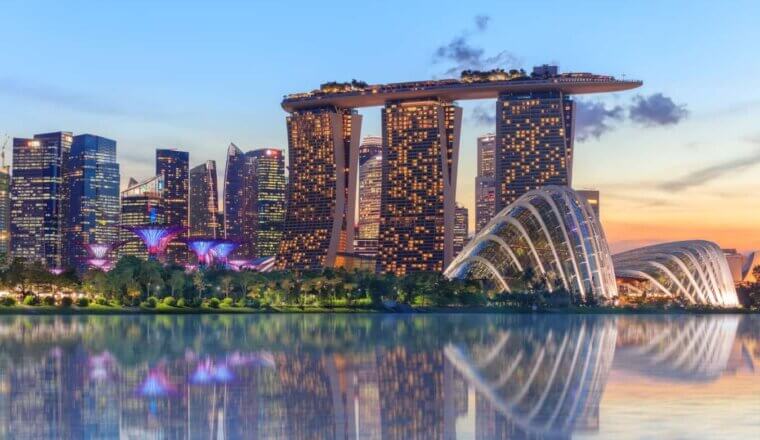
The 5 Best Hotels in Singapore
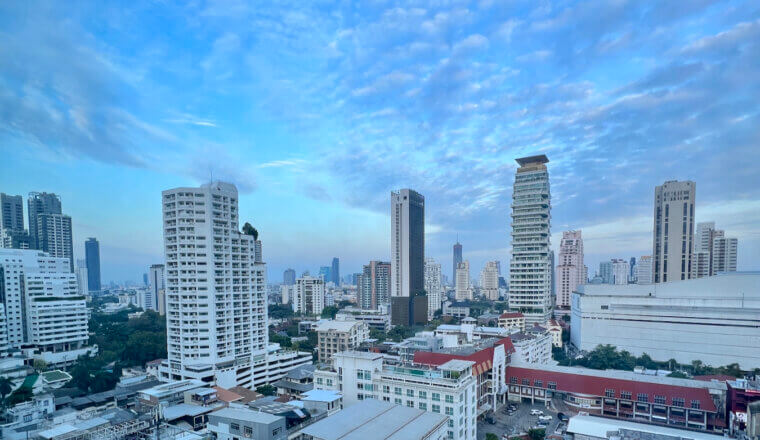
The 7 Best Hotels in Bangkok

The 4 Best Hostels in Singapore
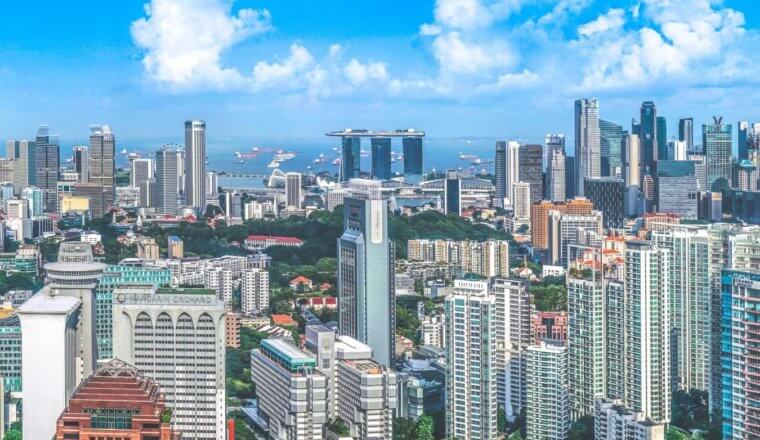
Where to Stay in Singapore: The Best Neighborhoods for Your Visit
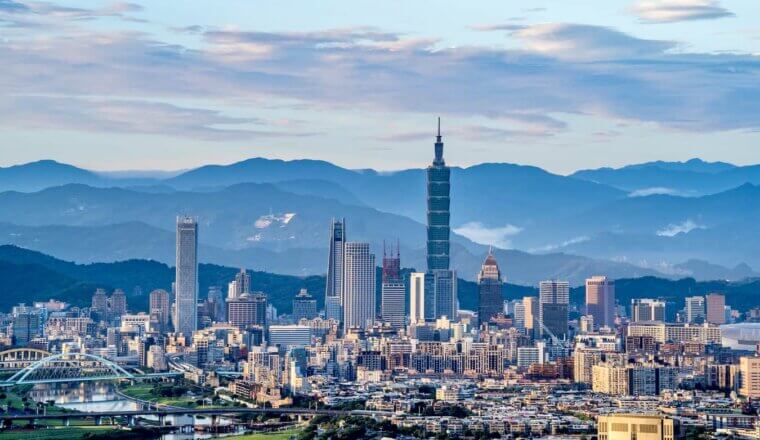
The 13 Best Things to See and Do in Taipei
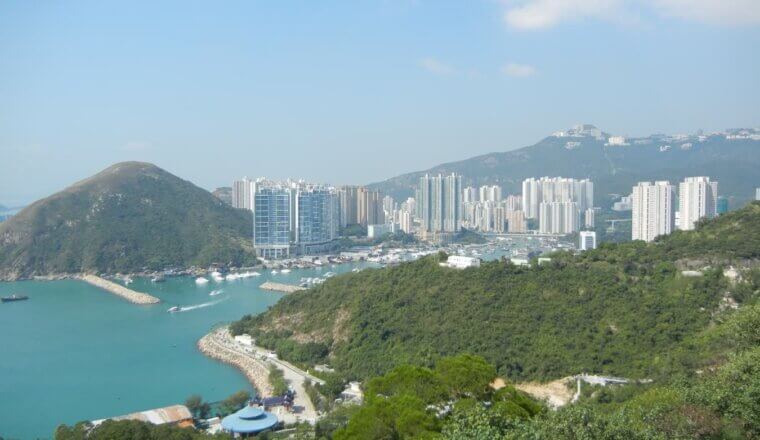

The 23 Best Things to Do in Hong Kong
Get your free travel starter kit.
Enter your email and get planning cheatsheets including a step by step checklist, packing list, tips cheat sheet, and more so you can plan like a pro!

- Where To Stay
- Transportation
- Booking Resources
- Related Blogs
Deals of the Week Unforgettable Asia Up to 50% OFF
All Tours Operated By Travel Talk
Discover the best Travel Talk adventures in one convenient place. TourRadar offers 142 Travel Talk tours. You can find the perfect trip spanning across 4 day to 27 day itineraries with prices starting from just EUR 126 per day!
142 Travel Talk trips

- Train & Rail
- Sightseeing
Felucca Odyssey (5 & 4 Star Hotels)
The organisation was good and simple. It was something special.
- €150 deposit on some dates Some departure dates offer you the chance to book this tour with a lower deposit.
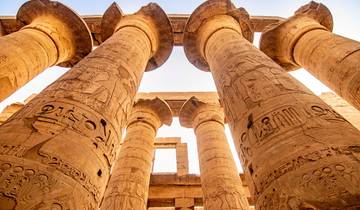
- In-depth Cultural
- Coach / Bus
- Christmas & New Year
Essential Egypt (5 Star Hotels)
It was an incredible experience! We were taken care of from the moment we landed at the airport.
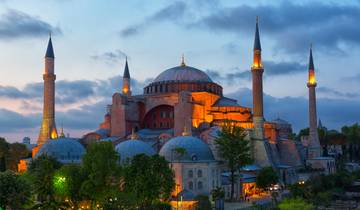
Best of Turkey by Land (5 & 4 Star Hotels)
The hotels did not dissapoint. I only wished I had time to use the facilities a bit more.
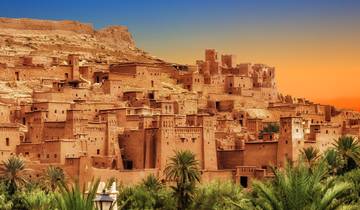
Exotic Morocco (4 Star Hotels)
Absolutely amazing! Such a great tour

Essential Jordan (4 Star Hotels)
I had an amazing time in Jordan. It was a dream trip and every little detail was great.
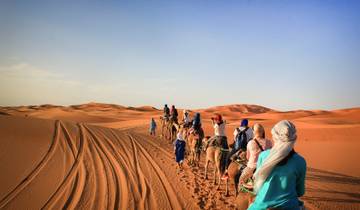
Adventure Morocco (4 Star Hotels)
Incredible country. Our tour guide Abdul was fantastic-knowledgeable, interesting, fun, and made the trip an unforgettable one!

All About Balkans (4 Star Hotels)
The itinerary was fast paced but well organized. All hotels were clean with great staff.
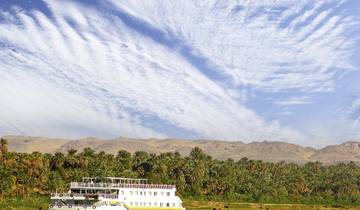
Jewels of the Nile (5 & 4 Star Hotels)
A jam-packed 8 days of ancient history and amazing sights in both Upper and Lower Egypt.

Balkan Discovery (4 Star Hotels)
The Balkans are beautiful, the people are warm and welcoming, and I couldn't have asked for a better group of travel companions.
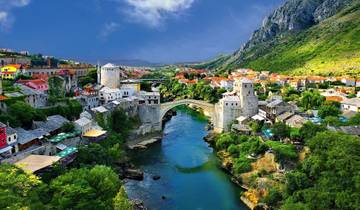
Best of Balkans (4 Star Hotels)
I had a wonderful time learning about the history, culture, religion and much more of these beautiful 7 countries, realising how strong these countries are in their own way!

Ultimate Egypt (5 & 4 Star Hotels)
He was so knowledgeable and genuinely worked to make sure everyone had an incredible experience.

Charming Thailand (4 Star Hotels)
The tour has been well organized, the hotels have been excellent.
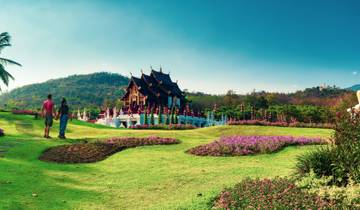
Best of Thailand (4 Star Hotels)
Amazing temples, I loved the elephants. Everything we'll planned.
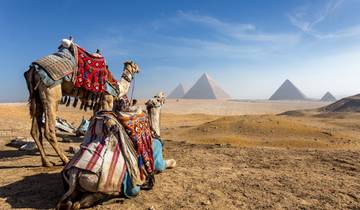
Felucca Sailtrek (5 & 4 Star Hotels)
If you want to see the best of Egypt for a great price, this is the tour to do!
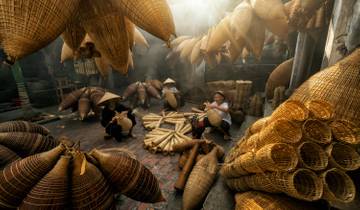
Incredible Vietnam
The Halong bay cruise was by far the best. This is my third time with Travel Talk and won't be the last.
Reviews of Travel Talk Tours
It was a wonderful trip with MO, he is very informative and tried his best to accommodate everyone’s needs.
Good times with my group. The tour guides were very helpful and attended to all our needs. Looking forward to more trips.
First time traveller with travel talk exploring Turkey 12 day land tour. Fantastic experience. Our guide Mustafa has made the tour very enjoyable, his laid back calm personality made this trip easy when you have a large group. All your concerns and questions are taken care of. He knowledge was exceptional. The bus is extremely comfortable and the drivers are very professional. Always eager to lend a hand when needed. The hotels did not dissapoint. I only wished I had time to use the facilities a bit more. As Mus said, this is a tour not a holiday lol Do yourself a favour and book a tour with travel talk- tour radar. Can Highly recommend the one I'm doing. I hope to return to Turkey in the near future. I have fell in love with the country. Vibrant Instanbul, different cultures, warm people to the many highlights of Anzac Cove, Troy, Ephesus with all the glory of ancient ruins, stepping back in time. Fethiye that oozes with stunning aqua blue coastline. Saklikent wow factor Canyon, truly breathtaking then swim in the pristine warm sea at Oludeniz. Spoilt for choice after all this take the extra option and paraglide. First time experience for me and I was stll buzzing with excitement days later. The scenery is exquisite. The company travel talk use a very experienced paragliders. I felt safe the whole time, enough to do 360 with him. Pamukkale natural site with its carbonate mineral terraced pools is another wow factor, not to mention Cappadocia riched in history and of course hot air balloon over the stunning lunar like landscape. Too many to mention. I have thoroughly loved everything about this tour and will certainly use travel radar - travel talk again.
- Europe (59)
- Africa (15)
- North America (14)
- Turkey (18)
- Indonesia (6)
- Malaysia (5)
- Thailand (5)
Discover TourRadar
- China Tours
- Sailing in Thailand
- Africa Budget tours
- Nepal and Tibet
- Pokhara Tour
- Grand Morocco Tour: Casablanca, Chefchaouen, Fez, Marrakesh, & More - 13 Days
- Tour of the Year Awards - Who Won TOTY 2019?

Malaysia Theme Park
Top Theme Park and Amusements in Malaysia Sunway Lagoon Theme Park Malaysia Premier Theme Park offers non-stop fun and adventure for your family. From the rides and slides of the Water Park to the Adventure Park and Fort Lagoon Wild Wild West. The Water Park is a fabulous man-made ocean of delights. Ride the waves […]
Malaysia Theme Park Read More »
Malaysia Shopping
Shopping in Malaysia! Malaysia is a shopping paradise. Shopping in Malaysia is a voyage of never-ending discovery and continues to be an unforgettable experience, a hunt for the rare treasures of the Orient. Shopping in Malaysia caters to all groups, with products ranging from up-market to mid-range and budget price. Malaysia presents shoppers with the
Malaysia Shopping Read More »
Malaysia Dining
Dining in Malaysia Malaysia has many kinds of restaurants almost everywhere in the cities and towns. There are Malay restaurants, Chinese restaurants, Indian restaurants, Thai restaurants, and more. Eating out in Malaysia is a real gastronomic adventure. There is such a great variety; spicy Malay Food, a seemingly endless variety of Chinese food, exotic cuisine
Malaysia Dining Read More »
Malaysian Cuisine
Cuisine in Malaysia Malaysia is home to some of the world’s most exciting cuisines. Here, you can try the exotic Malay, Chinese or Indian fare, each with its distinctive flavors and styles. Besides, there are also cuisines derived from a meeting of different cultures, such as the Nyonya and Indian Muslim foods. As Malaysia is
Malaysian Cuisine Read More »
Kuala Lumpur Airport Express Rail Link (ERL)
A ceremony was held in July 2000 to mark the start of work on a 57km express rail link between the centre of the Malaysian capital Kuala Lumpur, and the principal international airport. By 2002, this line is expected to be carrying four trains per hour in each direction, offering a city centre to airport
Kuala Lumpur Airport Express Rail Link (ERL) Read More »
Kuala Lumpur International Airports (KLIA)
Kuala Lumpur International Airports is the most modern airport in the world incorporates an ‘airport in the forest’ and a ‘forest in an airport’. Within the airport are well equipped facilities for business, relaxation, entertainment, five star accommodation as well as excellent food and beverages outlets for a distinctive international lifestyle in the world of
Kuala Lumpur International Airports (KLIA) Read More »
Malaysia Airlines
Malaysia Airlines, the largest passenger airline with the largest fleet in South East Asia, of over 100 aircraft and a network of more than 100 destination across 6 continents, flying over 15 million passenger annually. Traditional Malaysian warmth and hospitality have always distinguished our passenger and ground services. Regardless of which class you’re in, on
Malaysia Airlines Read More »
Why Travel Malaysia
This is a true vacations, Fascinating Malaysia for you, You could be cruising, round town where everything is ultra modern and find yourself roughing it out in the oldest rainforest on earth, the very next day. Whether it’s about shopping, indulging in culture, reliving the past or venturing into the future, you’ll find it all
Why Travel Malaysia Read More »
- Travel Tips Malaysia for planning and on the go
Book your individual trip , stress-free with local travel experts
Select Month
- roughguides.com
- travel-advice
- Travel guide
- Itineraries
- Local Experts
- Travel Advice
- Accommodation
Plan your tailor-made trip with a local expert
Book securely with money-back guarantee
Travel stress-free with local assistance and 24/7 support
More travel information for Malaysia
From travel safety to visa requirements, discover the best tips for traveling to Malaysia
- Sports and Outdoor activities in Malaysia
- Culture and Etiquette in Malaysia
- Eating and drinking in Malaysia
- How to get to Malaysia
- Getting around Malaysia: Transportation Tips
- Travel Health Malaysia
- Shopping tips for Malaysia
- Best time to visit Malaysia
The climate in Malaysia remains remarkably consistent throughout the year, with typical daytime temperatures of around 30°. However, the northeast monsoon brings torrential rains and heavy seas between September and February, concentrating its attentions on the west coast of the Peninsula in September and October, and on the east coast after that.
Entry requirements
Customs allowances, gay and lesbian travellers, living in malaysia, opening hours and public holidays, public and school holidays, tourist information, travellers with disabilities, travelling with children, health advice, drugs: a warning, travel ideas for malaysia, created by local experts.

12 days / from 2350 USD
Uniquely Rustic Malaysia
Malaysia has it all: great beaches, fascinating history, natural habitats and remarkable wildlife. Bustling KL offers the perfect city break; while further afield hiking trails, pristine jungles and fascinating ecosystems will keep the more adventurous visitors entertained.

7 days / from 1200 USD
Hidden UNESCO Sites of Malaysia
Steeped in historical significance and natural beauty, Malaysia is home to several emotionally moving UNESCO World Heritage Sites. It seems fitting, given the country's cultural touchstones and awe-inspiring parks—from solitude amidst the mangroves to history walks among colonial buildings.

3 days / from 450 USD
The Cameron Highlands in a Nutshell
Experience Malaysia's largest and most impressive hill station, the Cameron Highlands, in all their glory, with this compact trip. Let your picturesque surroundings soak in as you visit the famous Batu Caves, the Lata Iskandar Waterfalls and a local tea plantation.
Anyone entering Malaysia from Thailand will find that costs are slightly higher – both food and accommodation are more expensive – whereas travellers arriving from Indonesia will find prices a little lower overall. Travelling in a group naturally helps keep costs down. The region affords some savings for senior citizens, and an ISIC student card might occasionally pay dividends.
Note that bargaining is routine throughout Malaysia when buying stuff in markets or small shops, though you don’t haggle for meals or accommodation.
In Peninsular Malaysia you can scrape by on £12/US$20/RM60 per day staying in dorms, eating at hawker stalls and getting around by bus. Double that and you’ll be able to exist in relative comfort without thinking too hard about occasionally treating yourself. Over in east Malaysia , where accommodation and tours tend to cost a little more, the minimum daily outlay is more like £16/US$25/RM80.
Crime and personal safety
If you lose something in Malaysia, you’re more likely to have someone run after you with it than run away. Nevertheless, don’t become complacent: pickpockets and snatch-thieves frequent Malaysia’s more touristed cities, and theft from dormitories by other tourists is fairly common. If you have to report a crime, be sure to get a copy of the police report for insurance purposes.
Sensible precautions include carrying your passport and other valuables in a concealed money belt, and using the safety deposit box provided by many guesthouses and hotels. Take a photocopy of the relevant pages of your passport, too, in case it’s lost or stolen. If you use travellers’ cheques, keep a separate record of the serial numbers, together with a note of which ones you’ve cashed.
It’s worth repeating here that it’s very unwise to have anything to do with illegal drugs of any description in Malaysia.
To report a crime in Malaysia, head for the nearest police station, where someone will invariably speak English. In many major tourist spots, specific tourist police stations are geared up to problems faced by foreign travellers.
Restrictions on contact between people of the opposite sex (such as the offence of khalwat , or “close proximity”) and eating in public during daylight hours in the Ramadan month apply to Muslims only.
Electricity
Mains voltage in Malaysia is 230 volts , so any equipment using 110 volts will need a converter. The plugs in all three countries have three square prongs like British ones.
Nationals of the UK, Ireland, US, Canada, Australia, New Zealand and South Africa do not need visas in advance to stay in Malaysia, and it’s easy to extend your permission to stay. That said, check with the relevant embassy or consulate, as the rules on visas are complex and subject to change. Ensure that your passport is valid for at least six months from the date of your trip, and has several blank pages for entry stamps.
Upon arrival in Malaysia, citizens of Australia, Canada, the UK, Ireland, US, New Zealand and South Africa receive a passport stamp entitling them to a 90-day stay . Visitors who enter via Sarawak, however, receive a 30-day stamp. Visa requirements for various nationalities are listed on w malaysia.visahq.com .
It’s straightforward to extend your permit through the Immigration Department, who have offices (listed in the Guide) in Kuala Lumpur and major towns. Visitors from the above countries can also cross into Singapore or Thailand and back to be granted a fresh Malaysia entry stamp.
Tourists travelling from the Peninsula to east Malaysia (Sarawak and Sabah) must be cleared again by immigration; visitors to Sabah can remain as long as their original entry stamp is valid, but arriving in Sarawak from whichever territory generates a new 30-day stamp, which can be easily renewed.
When you arrive, you will normally be given a lengthy landing card to complete; hang onto the small departure portion of the card for when you leave Malaysia.
Embassies and consulates
Australia 7 Perth Ave, Yarralumla, Canberra, ACT 6000 t 02 6120 0600, w malaysia.org.au .
Brunei No. 61, Simpang 336, Kg Sungai Akar, Jalan Kebangsaan, P.O. Box 2826, Bandar Seri Begawan t 02 381095.
Canada 60 Boteler St, Ottawa, ON K1N 8Y7 t 613 241 5182.
Indonesia Jalan H.R. Rasuna Said, Kav. X/6, No. 1–3 Kuningan, Jakarta Selatan 12950 t 021 5224947.
Ireland Shelbourne House, Level 3A–5A, Ballsbridge, Dublin 4 t 01 667 7280.
New Zealand 10 Washington Ave, Brooklyn, Wellington t 04 385 2439.
Singapore 301 Jervois Rd t 6325 0111.
South Africa 1007 Schoeman St, Arcadia, Pretoria 0083 t 012 342 5990.
Thailand 35 South Sathorn Rd, Bangkok 10120 t 02 629 6800.
UK 45 Belgrave Square, London SW1X 8QT t 020 7235 8033, w malaysia.embassyhomepage.com .
US 3516 International Court, NW Washington, DC 20008 t 202 572 9700.
Malaysia’s duty-free allowances are 200 cigarettes or 225g of tobacco, and 1 litre of wine, spirits or liquor. There’s no customs clearance for passengers travelling from Singapore or Peninsular Malaysia to East Malaysia, nor for people passing between Sabah and Sarawak.
Though Malaysia’s largest cities have long had a discreet gay scene, the public profile of gays and lesbians was until recently still summed up by the old “don’t ask, don’t tell” maxim. However, cyberspace has helped galvanize gay people in both countries, providing a virtual refuge within which to socialize and campaign. While the environment in Malaysia is always going to be conservative – illustrated by the fact that Brokeback Mountain failed to be screened there, and by occasional raids on gay saunas – the Malaysian government has no obvious appetite, Islamically inspired or otherwise, to clamp down on the existing, limited gay nightlife.
For all the general loosening up over the years, it’s very much a case of two steps forward and one step back. Colonial-era laws criminalizing anal and oral sex remains on the statute book in Malaysia, and what gay-related campaigning exists tends to be channelled into the relatively uncontentious issue of HIV AIDS. Needless to say, all this makes legal recognition of gay partnerships a distant prospect.
This mixed picture shouldn’t deter gay visitors from getting to know and enjoy the local scene, such as it is. A small number of gay establishments are reviewed in this guide, and more listings are available on w www.fridae.asia and the Bangkok-based w www.utopia-asia.com .
A typical travel insurance policy usually provides cover for the loss of bags, tickets and – up to a certain limit – cash or cheques, as well as cancellation or curtailment of your journey. Some policy premiums include dangerous sports; in Malaysia, for example, this can mean scuba diving, whitewater rafting or trekking (notably in the Maliau Basin of Sabah). Always ascertain whether medical coverage will be paid out as treatment proceeds or only after return home, and whether there’s a 24-hour medical emergency number. When securing baggage cover, make sure that the per-article limit will cover your most valuable possession. If you need to make a claim, you should keep receipts for medicines and medical treatment, and in the event you have anything stolen, you must obtain an official statement from the police.
Internet cafés and shops can be found in all Malaysian cities and large towns, often in malls or in upstairs premises along central streets, and most backpacker guesthouses have free wi-fi connections. While many serve the odd coffee or coke, the emphasis often isn’t on beverages or even getting online, but on networked gaming, the terminals swamped by kids playing noisy shoot-em-ups late into the night. Periodic crackdowns temporarily compel the internet cafés to keep sensible hours and, it’s hoped, the youths in their beds. At least the cafés do provide reliable internet access, costing RM3–6 per hour in practically all cases.
For unlimited Wi-Fi on the go whilst travelling Malaysia, buy a Skyroam Solis , which works in 130+ countries at one flat daily rate, paid for on a pay-as-you-go basis. You can connect up to five devices at once. Prices start from as little as €5 a day.
Most Malaysian towns have laundries ( dobi ) where you can have clothes washed cheaply and quickly, according to weight (typically RM3 a kilo), picking them up later in the day or early the next day. Some hostels and guesthouses have washing machines that guests can use for a small charge. Dry-cleaning services are less common, though any hotel of a decent standard will be able to oblige.
Opportunities for non-residents to find short-term employment in Malaysia are few and far between. On an unofficial basis, helpers are often required in guesthouses; the wages for such tasks are low, but board and lodging are often included. On a more formal level, KL in particular is home to large communities of skilled expats with work permits, secured by their employer. In Malaysia expats can still expect elevated salaries,.
English-language-teaching qualifications are in demand by language schools in both countries, while qualified diving instructors can also find work in Malaysia. There are also a few volunteer schemes, mainly focusing on nature conservation fieldwork, though they’re seldom cheap to join.
Study and work programmes
AFS Intercultural Programs w afs.org. Community service schemes in Malaysia.
Earthwatch Institute w earthwatch.org. A range of nature-conservation projects; past projects include bat conservation and climate-change studies in Malaysia.
Fulbright Program w www.fulbright.org.uk . Regular opportunities for US citizens to spend several months teaching English in rural Malaysia, without requiring teaching experience.
Wild Asia w wildasia.org. Conservation group working to protect natural areas and promote responsible tourism and resource use across the region; offers internships.
W-O-X w orangutanproject.com . Orang-utan conservation in Malaysia, mostly at rehabilitation centres or upriver locations in Borneo.
Malaysia has a well-organized postal service operated by Pos Malaysia ( t 1300 300 300, w www.pos.com.my ), whose website details postage rates, express mail and courier (“PosLaju”) services and so forth. Expect airmail delivery to take one to two weeks depending on the destination.
The best commercially available maps of Malaysia are the city and regional maps published by the Johor Bahru-based World Express Mapping, sold in many local bookshops. Online mapping offered by the usual internet giants tends to be littered with inaccuracies, especially with regard to Malaysian road names. Most Malaysian tourist offices have their own free maps of the local area, though these are of decidedly variable quality and offer little that the maps in this guide don’t already include. Whichever maps you use, be aware that the high rate of highway construction and road alterations in rural and urban areas alike means that inaccuracies plague most maps almost as soon as they appear..
Malaysia’s currency is the ringgit (pronounced ring-git and abbreviated to “RM”), divided into 100 sen. Notes come in RM1, RM5, RM10, RM20, RM50 and RM100 denominations. Coins are currently minted in 5 sen, 10 sen, 20 sen and 50 sen denominations, with 1 sen coins still in circulation. You sometimes hear the word “dollar” used informally to refer to the ringgit.
At the time of writing, the exchange rate was around RM3 to US$1 and RM5 to £1. Rates are posted daily in banks and exchange kiosks, and published in the press.
Major banks in Malaysia include Maybank, HSBC, Citibank, Standard Chartered, RHB Bank and CIMB Bank. Banking hours are generally Monday to Friday 9.30am to 4pm and Saturday 9.30 to 11.30am (closed on every first and third Sat of the month), though in the largely Muslim states of Kedah, Kelantan and Terengganu, Friday is a holiday and Sunday a working day. Banks in all sizeable towns and most tourist areas have ATMs; details are given through the Guide.
Licensed moneychangers ’ kiosks, found in bigger towns all over the country, tend to open later, until around 6pm; some open at weekends and until 9pm, too. Some hotels will exchange money at all hours. Exchange rates tend to be more generous at moneychangers, though they don’t generally exchange travellers’ cheques.
You’re only likely to be really stuck for accessing money in remote rural areas; if, for example, you’re travelling upriver through the interior of Sabah or Sarawak, it’s a wise idea to carry a fair amount of cash, in smallish denominations.
Credit and debit cards have limited uses in the region, except to pay for goods and services in upmarket locations – you won’t, for example, be able to use your Visa card at a local kedai kopi , though a café chain in Kuala Lumpur will likely accept it, as indeed might a guesthouse in either place. Watch out too for an ongoing spate of credit card fraud in Malaysia, involving data swiped in genuine transactions being extracted and used to create a duplicate of your card.
In Malaysia , shops are open daily from around 9.30am to 7pm, though outlets in shopping centres and malls are typically open daily from 10am to 10pm. Government offices tend to work Monday to Friday from 8am to 4.15pm or 9am to 5pm, with an hour off for lunch, except on Friday when the break lasts from 12.15 to 2.45pm to allow Muslims to attend prayers. Note that in the states of Kedah, Kelantan and Terengganu, the working week runs from Sunday to Thursday, with Friday and Saturday as days off.
Opening hours for temples and mosques are given in the text where they keep to a formal schedule (often not the case).
As a guide, public holiday dates for 2012 are given here (the relevant government websites issue new lists for each year a few months in advance). Note that Muslim holidays (marked with an asterisk) move earlier by ten or eleven days each year, and that precise dates depend on the sighting of the new moon, which determines when each month of the Muslim calendar begins. Note also that each Malaysian state has its own additional holidays, which could be to do with its sultan’s birthday or an Islamic (in states with a largely Muslim population) or tribal event, such as Gawai in June in Sarawak. Some of the holidays here are marked by special festivities.
It pays to be aware of not just public holidays but also local school holidays , as Malaysian accommodation can be hard to come by during these periods. In Malaysia, schools get a week off in mid-March and late August, and two weeks off at the start of June, with a long break from mid-November to the end of the year.
Public holidays (2012)
January 1 New Year’s Day
January 23 Chinese New Year
February 5 Birthday of the Prophet Muhammad*
May 1 Labour Day
May 5 Vesak Day
June 2 Yang Dipertuan Agong’s Birthday
August 19 & 20 Hari Raya Puasa*
August 31 National Day
September 16 Malaysia Day
October 26 Hari Raya Haji (or Korban)*
November 13 Deepavali
November 15 Maal Hijrah (the Muslim New Year)*
December 25 Christmas Day
Malaysia has a comprehensive mobile network. If your phone is unlocked and GSM compatible (likely unless you’re from the US), you can buy a local SIM card from corner shops and 7–11 stores, which will of course give you a new number. Top up value at the same outlets; you either get a receipt with a pin number on it for you to dial and activate the recharge, or the shop staff will do this for you. If you need to buy a mobile (known locally as “hand phones”), outlets specializing in them are easily found, even in small towns.
There are public phones in most Malaysian towns. Local calls are very cheap at just 10 sen for three minutes, but for long-distance calls, it can be more convenient to buy a phonecard , from service stations, 7–Eleven outlets and newsagents. Your best bet is to use a card such as iTalk ( w tm.com.my ; from RM10), which enables you to make discounted calls from the line in your hotel room as well as from payphones.
The two big players in the mobile phone market are Hotlink/Maxis ( w hotlink.com.my ) and Celcom ( w celcom.com.my), with the smaller DiGi ( w digi.com.my ) bringing up the rear. On the Peninsula you’ll usually get a signal on both coasts, along highways and major roads, and on touristy islands. In the forested interior, as a rule your phone will work in any town large enough to be served by express trains (as well as at the Taman Negara headquarters). Sabah and Sarawak coverage is much patchier, focusing on cities and the populated river valleys, though even in the Kelabit Highlands mobile calls are possible.
Mobile tariffs can be complex, though you can expect calls made to other Malaysian numbers to cost no more than RM0.50 per minute.
Malaysia is eight hours ahead of Universal Time (GMT), all year. This close to the equator, you can rely on dawn being around 6.30am in the Peninsula, dusk at around 7.30pm; in Borneo both happen roughly an hour earlier. Not taking into account daylight saving time elsewhere, Malaysia is two hours behind Sydney, thirteen hours ahead of US Eastern Standard Time and sixteen hours ahead of US Pacific Standard Time.
Tipping is seldom necessary in Malaysia. When eating out at a proper restaurant, it’s customary to tip if a service charge isn’t included, though note that you are never required to tip in kedai kopis or kopitiams . It’s not necessary to tip taxi drivers either, unless they have gone out of their way to be helpful. Otherwise you might want to offer a modest tip to a hotel porter or hairdresser, or a tour guide who has been exceptional.
Tourism Malaysia ( w tourism.gov.my ) has offices in most state capitals. These are complemented by tourist offices, sometimes called Tourism Information Centres , run by state governments and again found in most state capitals. Such offices are generally helpful, if not widely knowledgeable: they have plenty of glossy brochures to hand out, but information here (and on websites) is often patchy, if not downright inaccurate. For out-of-the-way attractions you’re better off contacting local accommodation or tour operators – phone is best, as emails often elicit slow responses.
Malaysian state tourism contacts
Johor t 07 223 4935, w tourismjohor.com .
Kelantan t 09 748 5534, w tic.kelantan.gov.my
Labuan t 087 422622, w labuantourism.com.my.
Melaka t 06 281 4803, w www.melaka.gov.my .
Pahang t 09 516 1007, w pahangtourism.com. .
Penang t 04 262 0202, tourismpenang.net.my
Sabah t 088 212 121, w sabahtourism.com .
Sarawak t 082 423 600, w sarawaktourism.com .
Selangor t 03 5511 1122, w tourismselangor.my .
Terengganu t 09 622 1553, w terengganutourism.com .
Other tourist information sources
w allmalaysia.info Excellent tourism compendium put together by The Star newspaper, featuring travel-related news stories, state-by-state accounts of sights and background articles on culture and events.
w journeymalaysia.com Comprehensive, if patchy, coverage of just about everywhere and everything for tourists to see and do in Malaysia. Especially strong on outdoor activities.
w www.malaysiasite.nl Run by an enthusiastic expat, this site provides thumbnail sketches of popular destinations around Malaysia, including some out-of-the-way locations. Practical info isn’t always current, but it’s a useful resource with plenty of photos.
w virtualmalaysia.com The tourism portal of Malaysia’s Ministry of Tourism, with coverage of sights, tourism-related directories and assorted packages on sale.
w wildasia.org Dedicated to sustainable and responsible tourism, this Malaysia-based site features numerous articles on Southeast Asia with plenty on Malaysia itself, of course, including descriptions of forest reserves and dive sites, plus a list of the more environmentally aware resorts.
Malaysia makes few provisions for travellers with disabilities. Life is made a lot easier if you can afford the more upmarket hotels, which usually have disabled provision, and to shell out for taxis and the odd domestic flight. Similarly, the more expensive international airlines tend to be better equipped to get you there in the first place: MAS, British Airways, KLM, Singapore and Qantas all carry aisle wheelchairs and have at least one toilet adapted for disabled passengers. However, few tour operators in the region accommodate the needs of those with disabilities.
In Malaysia, wheelchair users will have a hard time negotiating the uneven pavements in most towns and cities, and find it difficult to board buses, trains, ferries and the LRT metro system in Kuala Lumpur, none of which has been adapted for wheelchairs. The situation is similar if not worse in east Malaysia, with little provision for disabled travellers.
Contacts for travellers with disabilities
Malaysian Confederation of the Disabled t 03 7956 2300, e [email protected]. A member of Disabled Peoples International, working for equal opportunities for disabled people in Malaysia.
Malaysia is a very child-friendly country in which to travel. Disposable nappies and powdered milk are easy to find (fresh milk is sold in supermarkets), and bland Chinese soups and rice dishes, or bakery fare, are ideal for systems unaccustomed to spicy food. Many restaurants and the slicker kedai kopis have high chairs, though only upmarket hotels provide baby cots or a baby-sitting service. However, rooms in the cheaper hotels can usually be booked with an extra bed for little extra cost. Children under 12 get into many attractions for half-price and enjoy discounts on buses and trains.
No inoculations are required for visiting Malaysia, although the immigration authorities may require a yellow-fever vaccination certificate if you have transited an endemic area, normally Africa or South America, within the preceding six days.
It’s a wise precaution to visit your doctor no less than two months before you leave to check that you are up to date with your polio, typhoid, tetanus and hepatitis inoculations. Tap water is drinkable throughout Malaysia, although in rural areas it’s best to buy bottled water, which is widely available.
Medical problems
Levels of hygiene and medical care in Malaysia are higher than in much of Southeast Asia; with any luck, the most serious thing you’ll go down with is an upset stomach.
Heat problems
Travellers unused to tropical climates may suffer from sunburn and dehydration. The easiest way to avoid this is to restrict your exposure to the midday sun, use high-factor sun screens, wear sunglasses and a hat. You should also drink plenty of water and, if you do become dehydrated, keep up a regular intake of fluids. Rehydration preparations such as Dioralyte are handy; the DIY version is a handful of sugar with a good pinch of salt added to a litre of bottled water, which creates roughly the right mineral balance. Heat stroke is more serious and can require hospitalization: its onset is indicated by a high temperature, dry red skin and a fast pulse.
Stomach problems
The most common complaint is a stomach problem, which can range from a mild dose of diarrhoea to full-blown dysentery. The majority of stomach bugs may be unpleasant, but are unthreatening; however, if you notice blood or mucus in your stools, then you may have amoebic or bacillary dysentery, in which case you should seek medical help.
Stomach bugs are usually transmitted by contaminated food and water, so steer clear of raw vegetables and shellfish, always wash unpeeled fruit, and stick to freshly cooked foods, avoiding anything reheated. However careful you are, food that’s spicy or just different can sometimes upset your system, in which case, try to stick to relatively bland dishes and avoid fried food.
Dengue fever and malaria
The main mosquito-borne disease to be aware of – and the chief reason to take measures to avoid mosquito bites – is dengue fever. The disease is caused by a virus spread by the Aedes aegypti mosquito (which has distinctive white marks on its legs) and there are periodic outbreaks, not just in rural areas but also in the major cities. Symptoms include severe headaches, pain in the bones (especially of the back), fever and often a fine, red rash over the body. There’s no specific treatment, just plenty of rest, an adequate fluid intake and painkillers when required.
Although the risk of catching malaria is extremely low, consider protection against it if you think you might be staying in remote parts of Borneo for some time. Most doctors will advise taking antimalarial tablets which, though not completely effective in protecting against the disease, do considerably lessen the risk and can help reduce the symptoms should you develop the disease. Bear in mind you have to start taking the tablets before you arrive in a malaria zone, and continue taking them after you return – ask your doctor for the latest advice.
Altitude sickness
Altitude sickness (or acute mountain sickness) is a potentially life-threatening illness affecting people who ascend above around 3500m. Symptoms include dizziness, headache, shortness of breath, nausea; in severe cases it can lead to a swelling of the brain and lungs that can prove fatal. In Malaysia it’s only likely to be relevant to those climbing Mount Kinabalu (4095m), and most people report only mild symptoms at this altitude. If you’re affected, there’s little you can do apart from descending to lower altitude, although certain prescription drugs may temporarily control the symptoms.
Cuts, bites and stings
Wearing protective clothing when swimming, snorkelling or diving can help avoid sunburn and protect against any sea stings. Sea lice, minute creatures that cause painful though harmless bites are the most common hazard; more dangerous are jellyfish, whose stings must be doused with vinegar to deactivate the poison before you seek medical help.
Coral can also cause nasty cuts and grazes; any wounds should be cleaned and kept as dry as possible until properly healed. The only way to avoid well-camouflaged sea urchins and stone fish is by not stepping on the seabed: even thick-soled shoes don’t provide total protection against their long, sharp spines, which can be removed by softening the skin by holding it over a steaming pan of water.
As for mosquitoes, you can best avoid being bitten by covering up as much as is practical, and applying repellent to exposed flesh. Note that most repellents sold locally are based on citronella; if you want a repellent containing DEET, which some say is more effective, it’s best to buy it at home. Rural or beachside accommodation often features mosquito nets, and some places also provide slow-burning mosquito coils which generate a little smoke that apparently deters the insects.
For many people, the ubiquitous leech – whose bite is not actually harmful or painful – is the most irritating aspect to jungle trekking. Whenever there’s been rainfall, you can rely upon the leeches to come out. Always tuck your trousers into your socks and tie your bootlaces tight. The best anti-leech socks are made from calico and available in specialist stores. If you find the leeches are getting through, soak the outside of your socks and your boots in insect repellent.
Venomous snakes are not that common, and any that you might encounter will usually slink away. If you are unlucky enough to be bitten then remain still and call for an ambulance or get someone else to summon help. If it’s one of your limbs that has been bitten, ideally a pressure bandage should also be applied to slow the spread of any venom present.
Pharmacies, clinics and hospitals
Medical services in Malaysia are excellent; staff almost everywhere speak English and use up-to-date treatments. Details of pharmacies and hospitals are in the “Directory” sections of the Guide for cities and major towns.
Pharmacies stock a wide range of medicines and health-related items, from contraceptives to contact lens solution; opening hours are the same as for other shops. Pharmacists can recommend products for skin complaints or simple stomach problems, though it always pays to get a proper diagnosis.
Private clinics can be found even in small towns – your hotel or the local tourist office will be able to recommend a doctor. In Malaysia a consultation costs around RM30, not including the cost of any prescribed medication; keep the receipts for insurance-claim purposes. Finally, the emergency department of each town’s general hospital will see foreigners for a small fee, though obviously costs rise rapidly if continued treatment or overnight stays are necessary.
Combating leeches
Leeches are gruesome but pretty harmless creatures that almost all hikers will encounter. A tiny, muscular tube with teeth at one end, they lie dormant in rainforest leaf litter until, activated by your footfalls and body heat, they latch onto your boot, then climb until they find a way through socks and trousers and onto your skin. Their bites (about the size of a pinhead) are completely painless, but they bleed a lot and sometimes itch as they heal.
Keeping leeches off isn’t easy; they can get through all but the closest-mesh fabrics. Tights work (but get very hot), though some guides recommend simply wearing open shoes and shorts, so that you can see them – an approach that requires an advanced jungle mentality.
The quickest way to remove a leech is to repeatedly flick its head end with your fingernail. Otherwise salt, tiger balm or tobacco juice, rubbed onto the leech, will cause them to let go rapidly.
Malaysia boasts plenty of newspapers, TV channels and radio stations serving up lively reportage of events, sports and entertainment, though don’t expect to come across hard-hitting or healthily sceptical coverage of domestic politics. The major media organizations are at least partly owned by the government.
Furthermore, the media are kept on their toes by a legal requirement that they must periodically renew their licence to publish. Thus the Sarawak Tribune was suspended indefinitely in 2006 after it reproduced the controversial Danish cartoons of the Prophet Muhammad; only in 2010 did it resume publication as the New Sarawak Tribune.
Given these circumstances, it’s no surprise that in the 2011/12 Press Freedom Index, issued by the pressure group Reporters Without Borders, Malaysia was far down the rankings at no. 122 – below much poorer nations not exactly noted for being exemplars of free speech, such as Mongolia and Lesotho. B
Foreign newspapers and magazines are sold in the main cities, and international TV channels are available via satellite and cable. That said, issues of foreign magazines containing pieces that displease the authorities have occasionally been banned.
If this all seems an unremittingly bleak picture, it should be said that coverage of Malaysia’s opposition parties has increased since they took power in several states in the 2008 general election. Furthermore, the advent of independent news websites and blogs has been a breath of fresh air in Malaysia. Elsewhere in cyberspace, it’s possible to turn up various YouTube clips of discussion forums and interviews with activists, offering an alternative take on local issues.
Newspapers, magazines and online news
Malaysia has English, Malay, Chinese and Tamil newspapers. Though Malaysia’s national dailies are available in towns in east Malaysia, locally published English-language papers such as the Borneo Post in Sarawak (wtheborneopost.com) and the Daily Express in Sabah (wdailyexpress.com.my) are more popular there.
- Aliran Monthly wwww.aliran.com. Campaigning magazine with an avowed pro-human-rights stance.
- Malaysia Insider wwww.themalaysiainsider.com. Considered more moderate than some of its online counterparts, the Insider provides intelligent news and commentary in English and Malay.
- Malaysia Today wwww.malaysia-today.net. This news website and blog was thrust into the international spotlight after the man behind it, Raja Petra Kamarudin, was interned under Malaysia’s Internal Security Act for two months in 2008.
- Malaysiakini wwww.malaysiakini.com. Invigorating reportage and opinion with an anti-establishment slant.
- New Straits Times wwww.nst.com.my. Closely linked to the UMNO party, this offshoot of Singapore’s Straits Times was created after the island separated from the Federation. A tabloid, it offers a broad range of news, sports and arts coverage.
- Sarawak Report wwww.sarawakreport.org. Not a Malaysian site – it’s run out of London – but worth a look for its hard-hitting coverage of issues such as logging, native peoples’ rights and the probity of Sarawak’s government.
- The Star wwww.thestar.com.my. Founded by the MCA party, The Star is Malaysia’s best-selling English daily and has a separate Sarawak edition.
Television and radio
TV and radio in Malaysia is dominated by state-owned broadcaster RTM, which puts out programmes in several languages. Terrestrial television features an unexceptional mix of news, documentaries and dramas made locally and abroad, cookery and talk shows, Islamic discussions and so forth; radio is even less original and tends to be dominated by pop music and talk shows. Various foreign TV channels, including CNN, BBC World, National Geographic, ESPN Sports and Al Jazeera (which has its East Asian base in KL), are available on cable and satellite in Malaysia.
- Cats FM wwww.catsfm.my. Kuching-based FM station offering music plus Sarawakian news; see the website for frequencies around the state.
- RTM1 & RTM2 wwww.rtm.gov.my. Malaysia’s staple state-owned TV channels, with some programming in English, Chinese and Tamil. News in English is broadcast on RTM2 at 8pm daily.
- Traxxfm wwww.traxxfm.net. Established RTM station with a mix of news and music in English, available on various frequencies around the Peninsula.
- TV3 wwww.tv3.com.my. English and Malay news, drama and documentaries, plus some Chinese programmes. Along with the youth-oriented channels NTV7, 8TV and TV9, it’s part of the same conglomerate as the New Straits Times.
- XFresh wwww.xfm.com.my. A good station for home-grown pop and rock music in Malay and English, though the patter is in Malay only. Audible in cities nationwide.
In Malaysia, the possession of illegal drugs – hard or soft – carries a hefty prison sentence or even the death penalty. If you are arrested for drugs offences you can expect no mercy from the authorities and little help from your consular representatives. The simple advice, therefore, is not to have anything to do with drugs in any of these countries. Never agree to carry anything through customs for a third party.
The Rough Guides to Malaysia and related travel guides
In-depth, easy-to-use travel guides filled with expert advice.

Travel advice for Malaysia
Find even more inspiration here.

Ready to travel and discover Malaysia?
Get support from our local experts for stress-free planning & worry-free travels.
- Where to stay
- Travel advice

- PROMOTION!!
- FRIENDLY AGENCY
- MSIG TRAVEL INS
PLAN YOUR JOURNEY START FROM HERE
Talk with our customer service.
Tel: +603-2118 7288
Email: [email protected]
More…
Well known as GTT in the travel and tour market, the company was born in 1989. GTT is recognised by the following as one of the leading and reputable travel agents in Malaysia. More>>>>
© 2024 GTT - Golden Tourworld Travel. All Rights Reserved.
Talk : Malaysia
- 2 Destinations
- 3.1 North (Malaysia)
- 3.2 Central (Malaysia)
- 5 Stay safe
- 6 National Parks
- 7 Taxi in Malaysia
- 8 about the "technically" part regarding to the criminality of homosexuality in Malaysia
- 9 Regions, Cities and Other Destinations
- 11 Passport reader
- 13 Malaysian ringgit
- 14 Upgrade to usable status?
- 15 Block of tout's website
- 16.1 Side point on satay
- 16.2 Where to include information about Malaysian curries
- 17 Wikidata items for dynamic map
- 18 Gigantic urban slums
- 19 "restricted to enter"
- 20 Type of script used in Kelantan
- 21 Postal codes for articles about Malaysia?
- 22 "Ensure that your passport is stamped"
- 23 Indians are getting visa-free entry to Malaysia
Malaria [ edit ]
There is a Malaria page, unless it got deleted. I noted it before and thought it should be discussed-- what do we do with health issues? They should be discussed, but in how much detail and in what format? Before I go any futher, I'll take this to the Malaria talk page... (WT-en) Majnoona 10:52, 29 Apr 2004 (EDT)
Destinations [ edit ]
How about Malacca and Kota Bharu as Destination cities? I don't know what slogans to use for them, but I think they belong. Malacca, abode of history? Kota Bharu, gem of the Northeast?
09:30, 5 July 2005 (UTC)
Well, is Taiping really a pensioners' paradise? I've never been there, but then I'm not a pensioner, nor are most tourists, and there are probably things about that city that would appeal to younger visitors. I happen to like Kota Bharu and think that it belongs because it's very different from every other city in Malaysia. The appeal for visitors is its uniqueness, in culture, food, architecture, dialect, etc. You might not find the pasars there a big deal, for example, but that doesn't mean other tourists wouldn't. But in any case, I'm just throwing out the idea to someone who might want to write the article. I'd do it, but I'm not enough of an expert. If you aren't interested, no problem.
Michael 09:43, 6 July 2005 (UTC)
This message was triggered off by what Jpatokal said in the Central (Malaysia) discussion page. I agree that decribing a region in Peninsular Malaysia as "Central" is odd. As a Malaysian, I have never heard of this being used. The usual references to regions in Malaysia are "East Coast" to cover Kelantan, Terengganu and Pahang and "West Coast" for Perlis, Kedah, Penang, Perak, Selangor, Negeri Sembilan, Malacca and even Johor. Johor of course has both a west and east coast, so it may not fit the "West Coast" classification so well. Can I rename and regroup the regions of Peninsular Malaysia into "West Coast" for Perlis down to Negeri Sembilan, "East Coast" for Kelantan, Terengganu and Pahang, and "South" for Malacca and Johor. (WT-en) Slleong 10:06, 10 Feb 2006 (EST)
Why is it not accepted that Kuala Kubu Bharu is a city? I looked up the definition of a city. KKB fits in perfectly. KKB is head district of Hulu Selangor, has a church, more than 2 chinese temples and a Mosque (please see cambridge definition of a city). Futhermore it is place of commerce, business and residence. The size is larger than a town because of facilities and infrastructure. Recently added train station, a bus station, schools, district councel (YDP is currently in office in KKB), hospital and of course market, residential zones, business and commercial centre and the rest. It also has an indipendent history, unique and not sub-dipendent on cities in the vicinity like KL. Please give me some reasons why this is not accepted... —The preceding comment was added by (WT-en) 124.13.71.238 ( talk • contribs )
Thank you for the response. I got your point. I understand now that it needs to be top 9 (and that was my problem). I cannot argue over Malacca that’s for sure! But I can certainly argue over IPOH (or some of the other destinations!). KKB has just recently entered the tourism world. Not because there were no tourists coming to KKB a few years back but because of it being primarily a LOCAL tourism destination. The problem was transportation and geographical. It was not well connected to Kuala Lumpur and the only way (or almost the only way) to visit KKB was using your own car. Everything changed in 2008. The KTM opened to KKB and the influx of tourists grew exponentially. KKB has a huge tourist per capita ratio even without counting the new KTM line which draws in more FOREIGN tourism. KKB is one of the best rafting and hiking destinations worldwide. More than 3 rafting companies are operating here in the surroundings. Bukit Kutu trail has been recently upgraded and reopened. The construction of the dam (recently completed) and it’s tourist information center have drawn in a large number of visitors together with the newly formed aborigine village of Pertak. Traditionally KKB’s local tourists came for golf (18hole golf course) . The night markets which draws an amazing number of local (and now overseas) tourists. It is also a pass by point for Frasier’s Hills and Genting. Many tourists stop over KKB for the food, shopping (KKB is very reasonably priced) and nature walks. New accommodations have opened up in the town itself and a tourist information centre is in the making. There are many more recent developments which are putting KKB on the MAP. I argue that population per tourist ratio KKB is way ahead of IPOH although does lack behind Malaka which is a well establish tourist destination for local and foreign tourists or Johor Bharu which is very strong in tourist influx from Singapore (for shopping mainly). —The preceding comment was added by (WT-en) 124.13.71.238 ( talk • contribs )
Sorry but KKB seams to be one of the best kept secrets of malaysia!!!! I will update in the following month more information on KKB. For your refrence these are the rafting companies I mentioned: Pierose Swiftwater (www.raftmalaysia.com) , Tracks (www.tracksadventures.com) and Khersonese Expedition (www.thepaddlerz.com). All of which are rafting, trekking, outdoor adventure companies that operate on rivers going to the dam. But KKB is not only this. I will update the KKB page as soon as possible. But please I would like to understand why you see Ipoh as a more important tourist destination than KKB. I cannot find a good reason except for city size (which I don't think constitutes a reasonable criteria or else the number of tourists going to Kuantan or Kuala Terengganu would be much higher than Putrajaya but they are not on the list).
Objections: 1) research engines do not only look for tourism related topics 2) this does not show that one city is more important than another in a certain field Consensus: I do understand the point that the more a city is talked about the more it should be good for tourism. Obviously this also has to do with the population problem I was explaining earlier. Surely KKB has no entries for industry or medical research but most of the listings probably do have something to do with tourism while Ipoh being a much more “complex” city obviously has a much smaller percentage related to tourism. Another point is the population. Let’s take this counter example: http://www.googlefight.com/index.php?lang=en_GB&word1=shenzhen&word2=guilin As you can clearly see Shenzhen is of ratio 1 to 8 with Guilin. Notice Shenzhen is not in the destination cities in China but Guilin is ( http://en.wikivoyage.org/wiki/China ) To further analyize the matter, consider the population difference between the Malaysia and Chinese example: Malaysian Population 746.300 Ipoh google hits 3.780.000 Population 5.000 Kuala Kubu Bharu google hits 212.000 Chinese Population 4.000.000 shenzhen google hits 22.000.000 Population 1.340.000 guilin google hits 2.710.000 Simple, if you do the math and take into consideration population/google hits ratio without even considering my other argument than KKB Should be placed on destinations.
Hello, I am the "KKB GUY". Sorry for my lack of form. I just signed up and I have a new account. Sorry to see that you do not have any argumentation and can only send me links. Maybe Wikipedia should just rely on google as a form of ultimate knowledge and information. I have hence decided to delete Ipoh and substitute it with KKB. If you give me sufficient argumentation to support the contrary I will put KKB under others as has been suggested. —The preceding comment was added by (WT-en) Lorenzoitaly ( talk • contribs )
Very Well, I agree that not enough information on KKB has been put into the web (a true pity). Let's put it under "Other destinations" using the description I presented, but in 6 months time let's revise it if information on the web has increased or if I present further evidence (for instance KKB is applying for UNESCO as world heritage site) than you will try to reconsider. Do you agree?
Region vfd discussions [ edit ]
North (malaysia) [ edit ].
- Delete. Merged into the more commonly known West_Coast_(Malaysia) which extends from north to south. (WT-en) Slleong 05:39, 9 March 2006 (EST)
- Keep & redirect to West_Coast_(Malaysia) Changed my mind - instead:
- Keep & disambiguate (which I've just done, incorporating state lists/links).
- Delete. -- (WT-en) Tom Holland (xltel) 15:31, 14 March 2006 (EST)
- My personal preference would be to come up with a clear set of regions and stick to them, and only set up redirects and disambiguations when there are common region names in use that differ from what Wikivoyage uses. In this case I don't think "North Malaysia" would be a common enough term that we need an article for it. -- (WT-en) Ryan 20:00, 25 March 2006 (EST)
- Is the edit history worth considering when thinking about how common usage of such a term might be? Neither North (Malaysia) nor Central (Malaysia) started out as disambiguations - the origins of both seem to be pretty much identical to North (India) except that instead of a single region being subdivided, the entire region was re-divided. 203.151.141.194 05:55, 27 March 2006 (EST)
Central (Malaysia) [ edit ]
- Delete. Even more unheard of than the above, also merged contents into West_Coast_(Malaysia) . (WT-en) Slleong 05:39, 9 March 2006 (EST)
- Keep - was converted to a disambiguation yesterday Keep if keeping North (Malaysia) - otherwise delete. 203.151.141.194 06:05, 27 March 2006 (EST)
- See comments above. -- (WT-en) Ryan 20:00, 25 March 2006 (EST)
People [ edit ]
I disagree with the revised population statistics. The official 2004 stats are Malay 50.8%, Chinese 23.8%, Indigenous 10.9%, Indian 7.1%, non-Malaysian citizens 6.8 %, others 0.6%. (WT-en) Greenmango 01:34, 4 October 2006 (EDT)
Stay safe [ edit ]
WARNING: Indonesians (they look like Malays) around Kuala Lumpur cheat tourists frequently by selling fake products (like Rolex, etc.). STAY AWAY FROM THESE CHEATERS. THEY WILL FOLLOW YOU. Also, be careful with taxi drivers because some charge an unusually high fees when it comes to foreigners.
that part is racist and not appropriate
National Parks [ edit ]
Can you list the 3 mouuntains taller than Gng Kinabalu/ (WT-en) Greenmango 21:23, 22 July 2008 (EDT)
Taxi in Malaysia [ edit ]
In Kuala Lumpur, may I ask, is it possible to have five passengers in a taxi? Will they allow? The three passengers are 16 years old and below.
-In KL (as the locals call it), they'll let you stuff as many people as you want into a cab.
The limit is 4, and most taxi drivers are quite strict about that now. (WT-en) Greenmango 21:50, 17 September 2008 (EDT)
about the "technically" part regarding to the criminality of homosexuality in Malaysia [ edit ]
When I mentioned that homosexuality is illegal due to strong influence of Islam in Malaysia, someone else placed the word "technically" in the comment which ends up being "homosexuality is technically illegal." I thought homosexuality IS illegal due to strong influence of Islam. Can anyone fully explain this? -- (WT-en) Dark Paladin X 19:32, 10 May 2009 (EDT)
(typographical errors corrected by me) In the field of criminal law in particular, the jurisdiction of the Shariah Courts is very limited. It has jurisdiction only over persons professing the religion of Islam and it has only such jurisdiction in respect of offences as is conferred by Federal law. Until 1984, the Muslim Courts (Criminal Jurisdiction) Act, 1965 had provided that such jurisdiction should not be exercised in respect of any offence punishable with imprisonment for a term not exceeding six months or any fine exceeding $1,000.00 or with both. The Act was amended in 1984 and the jurisdiction of the Syariah Court has been extended by giving them jurisdiction to deal with cases punishable with imprisonment up to three years, or a fine up to $5,000.00 or whipping up to six strokes or the combination of all these. The Criminal jurisdiction of the Shariah Courts is therefore less than that of the First Class Magistrate which can generally try offences for which the maximum term of imprisonment does not exceed ten years imprisonment.
The subordinate position given to the Shariah Courts is also shown by the fact that in many cases their decisions could be overridden by the decisions of the civil courts. The Selangor Administration of Muslim Law Enactment, 1952, provided after setting out the jurisdiction of the Courts of the Kathi Besar and the Kathi, that "Nothing in this Enactment contained shall effect the jurisdiction of any civil courts and in the event of any difference or conflict between the decision of a courts of Kathi Besar or a kathi and the decision of a civil court acting within its jurisdiction, the decision of the Civil Court sh 11 prevail." Indeed there were many cases reported which show that the decision of the civil courts would prevail over the decision of the Shariah Court and the rulings of the Mufti, the highest Muslim legal officer.
The unsatisfactory position of the Shariah Courts and its judges and officers led the Government to form a Committee under the Chairmanship of the late Tan Sri Syed Nasir Ismail to look into the position and suggest measures to be taken to raise their status and position. The Committee in its report recommended that (a) the Shariah Courts should be separated from the Council of Muslim Religion in the States and be independent of it (b) steps be taken to improve the training and recruitment of Shariah judicial and legal officers and (c) steps be taken to improve the facilities in the Shariah Courts, especially in regard to court buildings, supporting staff and facilities. The recommendations of the Committee were in general accepted by the Government and steps taken to implement them.
The most significant change has been made by the enactment of the amendment to Article 121 of the Federal Constitution which has modified the provision that the judicial power of the Federation shall be vested only in the civil courts and has also provided that the High Courts and courts subordinate to it shall have no jurisdiction in any matter which comes within the jurisdiction of the Shariah Courts. It may be noted that, with the establishment of the Federal Territories of Kuala Lumpur and Labuan, the Shariah Courts have become federal courts for these territories.
Administrative measures have also been taken to separate the Shariah Courts from the Council of Muslim Religion. The judicial officers of the Shariah Court have been placed in the professional group and most states now provide adequate buildings, staff and facilities for the Shariah Court. With the assistance of the Public Service Department, a one-year in service diploma course has been instituted in the International Islamic University to provide professional training to the serving officers of the Shariah Courts. This has since been extended to fresh graduates from the universities who are required to undergo a two year professional programme. In this way the professional competence of the officers of the Shariah Court has been enhanced, so as to make them better able to carry out their duties in the Shariah Courts.
In the past the only legislation on the administration of the Muslim Law in the States was the Administration of Muslim Law enactment. This dealt, among other things with the constitution and powers of the Council of Muslim Religion, the Mufti and the power to issue fatwa or rulings on Muslim Law, the law relating to Muslim marriage and divorce, wakafs and baitulmal and the Shariah Courts. The provisions were very limited in their scope and in particular the law relating to the procedure and evidence to be applied in the Shariah Courts was inadequate and required reference to the civil law applicable in the civil courts. There was a need to have a new laws to deal with the administration of the Islamic Family Law and the jurisdiction, powers and evidence and procedure applicable in the Shariah Courts in detail.
Before 1984 each State had its own legislation on the administration of the family law. There was a need to have a uniform law in this matter and a Committee headed by Tengku Zaid from the Attorney-General's Chambers was appointed to prepare a model enactment. This model code was later agreed to by the Conference of Rulers and after that referred to the various States for enactment of the legislation. Unfortunately the hope to have a uniform Islamic family law in this way was not achieved as some states, particularly Kelantan, Kedah and Malacca, made significant changes to the draft. In addition to the problem of lack of uniformity in the laws applied in the various states there was also the problem of conflicts between the civil law and the Shariah Law. It was necessary therefore, that steps should be taken to suggest measures to reconcile and have uniformity in the Islamic Family Law applicable in the various states and to improve and strengthen the administration of the law in the Shariah Courts. In addition there was a need to examine the existing legislation, both Federal and States, and suggest the removal of those provisions which are found to be in conflict with the Islamic law.
At present the most important jurisdiction of the Shariah Courts is in relation to the family law of the Muslims. in this respect, an effort had been made earlier to have a uniform law for the various States in Malaysia but unfortunately this has not succeeded. One of the first tasks of the authorities was therefore to study the various Islamic family laws and to recommend various amendments to bring them closer to one another. The two most important enactments were those enacted in Kelantan and in the Federal Territory and therefore amendments were suggested to the Kelantan and Federal Territory laws for adoption by them and the other states which followed one or other of them. A comprehensive table of amendments was prepared for each state or territory and these were discussed with the relevant authorities in the States or territory. Alhamdulillah many States have accepted the suggested amendments and it is hoped that in time the Islamic family Law administered in Malaysia will be more uniform. Those states who have not yet enacted the Islamic Family legislation have been encouraged and assisted to enact them. In addition to bringing the laws nearer to one another, amendments have also been suggested to ensure that the civil courts will not continue to exercise jurisdiction in such matters as breach of promise of marriage, custody of children and the division of the harta sepencarian or jointly acquired property. -- A l i c e ✉ 01:26, 9 December 2012 (UTC)
Regions, Cities and Other Destinations [ edit ]
After Peter completed his excellent map, I noticed that Labuan is being treated as a separate top level region . Frankly, that makes no sense whatsoever. It is tiny and insignificant for the traveller. The Federal Territories in Peninsular Malaysia are treated as part of West Coast , and I strongly think therefore that Labuan should be treated as part of Sabah . -- (WT-en) Burmesedays 12:57, 1 January 2010 (EST)
- Perhentian Islands
- Tioman Island
- Taman Negara National Park
- Kinabalu National Park
- Cameron Highlands
- Fraser's Hill
- Either Kubah National Park or Redang -- (WT-en) Burmesedays 13:08, 1 January 2010 (EST)
I think we should get rid of "Peninsular Malaysia" and "East Malaysia" as we already use the levels below them as top-level regions. -- (WT-en) globe-trotter 11:04, 15 July 2010 (EDT)
Regions [ edit ]
-- (WT-en) globe-trotter 08:02, 18 July 2010 (EDT)
Passport reader [ edit ]
In the old immigration/customs building for those exiting Singapore and entering Malaysia, there is the option for holders of Malaysian passports to use a passport machine instead of going through a counter manned by staff. Does anyone know what info is read by the machine? Does it read visa stamps? 118.101.61.189 09:28, 5 April 2011 (EDT) It reads chips in the passport. JadeDragon ( talk ) 11:34, 22 January 2013 (UTC) Reply
Get In [ edit ]
I wish to add a reminder note for people regarding the newly introduced finger printing at malaysian entry points. This will serve to plan their schedules especially when having onward connecting itineraries. But I'm not sure if all of the checkpoints have the finger printing. Fellow travellers, please advise.
Malaysian ringgit [ edit ]
There are currently a variety of currency styles in use in our Malaysian articles, eg: RM34, 34 ringgit, RM 34, ringgit 34, MYR34, etc.
Since its official abbreviation is RM ( Ringgit Malaysia in the local language), in 7 days I propose adding
"RM100 in Kuala Lumpur , not Ringgit 100, 100 RM, MYR 100 or RM 100 (with a space before the amount)"
to http://en.wikivoyage.org/wiki/$#Currency_symbols unless someone gives cogent reasons at http://en.wikivoyage.org/wiki/Wikivoyage_talk:Currency#Malaysian_ringgit why this would be inappropriate. -- A l i c e ✉ 23:58, 7 January 2013 (UTC)
Upgrade to usable status? [ edit ]
I believe the Malaysia article meets all the criteria of usable country status , but it is classified as an outline. What am I missing? Jnich99 ( talk ) 06:46, 18 May 2014 (UTC) Reply
Block of tout's website [ edit ]
A certain tout has been very persistent recently. I created Special:AbuseFilter/27 since it is hard to get around posting that URL each time. Let me know if this is an excessive response. -- Andrewssi2 ( talk ) 09:18, 20 July 2016 (UTC) Reply
Spinoff Article on Food. [ edit ]
I've noticed that we have separate articles for some different cuisines, such as Japanese, Chinese, Indian and Russian cuisine. I was wondering if we should create a separate article covering the cuisine of Malaysia and Singapore (and maybe Brunei?) since both countries have a shared culinary tradition, having such an article means that we can shorten the main Malaysia and Singapore articles, and do more justice to the cuisine within the standalone articles. This will also allow us to go into more detail about regional variations in Malaysian cuisine (for instance, I used to travel to Penang fairly regularly since you can't find some of those dishes in Johor). In addition, I think it would be fine to lump Singaporean and Malaysian cuisine together since for practical purposes, Singaporean cuisine can be considered a regional variant of Malaysian cuisine (unlike say, Thai or Vietnamese cuisine, which are completely distinct). The dog2 ( talk ) 17:37, 24 April 2018 (UTC) Reply
Side point on satay [ edit ]
The most common kinds of satay are what? I'd say chicken and goat, but the article says chicken and beef. Is that currently accurate? Ikan Kekek ( talk ) 10:29, 15 June 2018 (UTC) Reply
Where to include information about Malaysian curries [ edit ]
I'd like to include this, but I don't know whether it's specifically Malay and belongs in the subsection on Malay cuisine, or whether it's more generically Malaysian and belongs elsewhere:
- Gulai and "kari" are the generic Malay words for "curry". Malay curries are made with a base of coconut milk (not yogurt, as in Northern Indian cuisine) and typically use a rempah (spice mixture) that includes turmeric, shallots, garlic, shrimp paste and dried or fresh chilis. Malaysian tamarind is also frequently used, and if the taste of tamarind is particularly pronounced, it may be called a "kari asam" dish. Curries can feature fish ( ikan ), chicken ( ayam ), goat ( kambing ), shrimp ( udang ), vegetables, etc.
We also need to cover asam dishes and sayur (not generic vegetables: the dish, usually a side dish, of certain kinds of vegetables boiled in coconut milk with fresh chilis). Ikan Kekek ( talk ) 10:41, 15 June 2018 (UTC) Reply
Wikidata items for dynamic map [ edit ]

To the right is the map with all Wikidata items for the states of Malaysia. This should simplify the work in case we want to change the district set-up in the future. The tool Wikidata Extractor has been used to create the mapshapes.-- Renek78 ( talk ) 08:22, 21 August 2018 (UTC) Reply
Gigantic urban slums [ edit ]
However, you will not find extreme rural poverty or gigantic urban slums as in other places in Southeast Asia
I haven't been to Malaysia since 2003, so I'd like an update on whether the shantytown neighborhood near Brickfields, Kuala Lumpur is still there. Ikan Kekek ( talk ) 19:11, 18 June 2019 (UTC) Reply
"restricted to enter" [ edit ]
This is in the warningbox. I don't recognize this phrase as English, because at least as I understand my native tongue, a person can't be restricted to do something, rather than restricted to, for example, a particular area. Does it mean forbidden to enter or subjected to restrictions that prohibit entry except on x or y condition? Ikan Kekek ( talk ) 18:36, 19 March 2020 (UTC) Reply
Type of script used in Kelantan [ edit ]
Malaysia#Talk says this:
Arabic is taught to those who attend Islamic religious schools, and many clerics as well as other very observant Muslims will have a functional command of Arabic. However, it is not widely spoken, though the Malay language does have a large number of loan words from Arabic. You also might notice some examples of Malay written with Arabic letters. This is called Jawi, and it is still used for religious publications and inscriptions, especially in states like Kelantan, although the Latin alphabet is much more commonly used throughout the country.
I'm a little confused. Does that mean the Latin alphabet is used in Kelantan more, or is Malay with Arabic letters. @ Ikan Kekek , The dog2 :, by any chance, do you both know whether it's the Latin or Arabic alphabet used more? Kelantan says nothing about the Arabic script being used. SHB2000 ( talk | contribs | meta.wikimedia ) 07:56, 23 October 2021 (UTC) Reply
Postal codes for articles about Malaysia? [ edit ]
Is it on the exceptions list? Just did some cleanups on Batu Pahat , but I'm not sure whether it's on the exceptions list. SHB2000 ( talk | contribs | meta.wikimedia ) 11:13, 20 November 2021 (UTC) Reply
"Ensure that your passport is stamped" [ edit ]
Is there a problem with Malaysian officials not stamping passports of entering foreign visitors? If there is such a problem, I think we need to be much more blunt about it. And if there is, why? Ikan Kekek ( talk ) 19:13, 7 July 2022 (UTC) Reply
Indians are getting visa-free entry to Malaysia [ edit ]
Malaysia is allowing visa free travel to Indians till December 2024. Should we add it in this article? Libreravi ( talk ) 22:26, 10 January 2024 (UTC) Reply
- Countries where Wikivoyage uses British spelling
- Pages with maps
Navigation menu

- The Star ePaper
- Subscriptions
- Manage Profile
- Change Password
- Manage Logins
- Manage Subscription
- Transaction History
- Manage Billing Info
- Manage For You
- Manage Bookmarks
- Package & Pricing
Thousands of Bangladeshi workers in limbo on entry deadline day, says report
Friday, 31 May 2024
Related News

Development of care economy in Malaysia
Exemplifying value-based finance: the impact of islamic finance in malaysia’s journey towards high-income status, envisaging greater johor baru as malaysia’s second economic capital.
KUALA LUMPUR: With the May 31 deadline for employers to bring foreign workers into Malaysia, over 30,000 Bangladeshi workers approved to travel here will not make it in time.
According to Bangladeshi news portal Kaler Kantho, data from the Bangladesh Manpower Employment and Training Bureau (BMET), under the Expatriate Welfare Ministry, reveals that the last green light for workers to travel to Malaysia was granted on May 21.
The report said that although approvals ceased after this date, additional clearance was granted for another 1,112 workers.
As a result, only 1,500 of the approved workers will be able to officially travel to Malaysia on deadline day, cancelling the plans of the remaining 31,701 workers still in Bangladesh.
KL International Airport (KLIA) terminals are facing congestion, with approximately 20,000 workers from 14 countries, including about 5,000 from Bangladesh, stranded within the two terminals awaiting employer identification, said the report.
"Amid concerns of workers being left stranded, attempts to communicate with employers have failed."
One anonymous source told the report: "We never talked about sending workers back. However, due to the excessive crowd, it's challenging to locate them. We need time for this."
To handle the influx of migrant workers, Malaysia's Immigration Department has increased the number of immigration officers on duty, opened additional counters, and provided food and water to the waiting workers.
There have also been complaints regarding agencies selling flight tickets at inflated prices as the market closes.
Malaysia had responded to a letter from the United Nations that stated Bangladeshi workers were being required to pay a significant recruitment fee of between US$4,500 to US$6,000 (RM21,000 to RM28,000) per person, which violates the memorandum of understanding (MOU) signed between the two countries in 2021 that capped the fee at US$720 (RM3,386).
The letter had highlighted allegations of a criminal network cheating Bangladeshi workers out of gainful employment, and instead fraudulently recruiting them for fake companies.
Abul Bashar, president of the Bangladesh Association of International Recruiting Agencies, said workers were suffering financial losses due to not being able to travel to Malaysia.
The association, he said, had discussed extending the programme for one or two months to allow all workers to travel with the Bangladeshi government.
Expatriate Welfare and Foreign Employment Ministry deputy secretary (employment) Gazi Md Shahed Anwar said a future meeting is scheduled to address the issue, according to the report.
Related stories:
Tags / Keywords: Malaysia , Migrant Workers , Bangladesh , Visas , Kuala Lumpur International Airport , Expatriate Welfare Ministry , Bangladesh Manpower Employment and Training Bureau (BMET) , Corruption
Found a mistake in this article?
Report it to us.
Thank you for your report!

Beat the heat with LG’s energy-saving ArtCool air conditioner
Next in nation.

Trending in News
Air pollutant index, highest api readings, select state and location to view the latest api reading.
- Select Location
Source: Department of Environment, Malaysia
Others Also Read
Best viewed on Chrome browsers.

We would love to keep you posted on the latest promotion. Kindly fill the form below
Thank you for downloading.
We hope you enjoy this feature!

COMMENTS
From the bustling urban centers to the tranquil beauty of the countryside, Malaysia beckons you with its rich heritage, vibrant traditions, and breathtaking scenery. Travel Talk Malaysia Tours takes you on a journey from the iconic Petronas Twin Towers in Kuala Lumpur to the pristine beaches of the coast, and from the lush rainforests of Borneo ...
Why Travel Talk At Travel Talk, ... Escape to Malaysia's sun-kissed coastlines, where pristine beaches, turquoise waters, and laid-back vibes beckon travelers to unwind and recharge. Whether lounging on powdery sands, snorkeling in vibrant coral gardens, or indulging in fresh seafood delicacies, Malaysia's coastal towns offer a tranquil ...
Incredible Borneo, Malaysia. Come join Travel Talk Tours on an 11-day expedition that will transport you through the captivating landscapes of Borneo and Malaysia. This remarkable odyssey promises to be a symphony of diverse cultures, awe-inspiring natural wonders, and immersive experiences that will leave an indelible mark on your soul.
6. Partying is a bit more expensive. Compared to its backpacker-centric Southeast Asian neighbors Thailand, Cambodia and Vietnam, Malaysia is a more expensive party destination because of heavy taxes on alcohol, which is forbidden to Muslims. The rest of the population is free to drink but forced to pay a higher price.
Malaysia tours operated by Travel Talk with 1 review (5 tours in total). Book and save with TourRadar.com - Best Price Guarantee. Deals of the Week All of Europe's finest Up to 50% OFF. Deals end: 20 May, 2024. 0. Destinations. Destinations. Adventure Styles. Deals . Deals
Hope you enjoy reading my Malaysia Travel Guide and favorite photos from my travels! Note: This Malaysia Travel Guide will focus entirely on Peninsular Malaysia. ... I'd recommend Tune Talk. There are great prices and deals, and it's good coverage. Download my Free E-Book — 77 Amazing, Helpful, Money-Saving Tips for Backpacking South-East ...
I also talk about how to plan a trip to Malaysia in my podcast episode here. Malaysia Map. But before we start going through everything, here is a Malaysia map. ... Sharon is a certified Malaysia travel expert and can't get enough of travelling and talking about Malaysia since she first visited 21 years ago. She travels around Malaysia multiple ...
With the Explorer tour Best Of Singapore & Malaysia (5 & 4 Star Hotels), you have a 8 days tour package taking you through Singapore, Singapore and 4 other destinations in Asia. Best Of Singapore & Malaysia (5 & 4 Star Hotels) includes accommodation in a hotel as well as an expert guide, meals, transport and more. Expand All.
Travel Talk Malaysia. 204 likes. Travel Talk Malaysia is a new platform to discuss and share information about travel in and around M
SHOW ALL. Indulge in an awe-inspiring adventure of a lifetime. Enjoy fun times with your family, explore the wilderness and taste the mouth-watering cuisine of Malaysia.
Treasures Of Singapore & Borneo, Malaysia (5 & 4 Star Hotels), a 15 days tour from Singapore to Malacca, Kuala Lumpur and 7 destinations. Best Selection - Best Price - Trusted Payments. Shop 2,500 operators ... At Travel Talk, we have one focus and that is simply to make your trip the experience of a lifetime without breaking the bank. Being ...
Here on Talk Travel Asia podcast, we explore a variety of destinations across Asia, including the things to do and see, where to eat and shop, and even where to stay. ... Thailand, Malaysia, and Indonesia, in particular, have world-class snorkeling and diving sites. If you're thinking of getting your open water certification, want to get ...
1. Visit Kuala Lumpur. Chances are you'll be spending at least a few nights in Malaysia's capital, Kuala Lumpur. Visit the iconic Petronas Twin Towers, see the famous Sri Mahamariamman Temple, explore the Batu Caves, and see the colorful butterfly garden. It's a great foodie city too.
All Tours Operated By Travel Talk. Discover the best Travel Talk adventures in one convenient place. TourRadar offers 142 Travel Talk tours. You can find the perfect trip spanning across 4 day to 27 day itineraries with prices starting from just USD 138 per day! 142 Travel Talk trips. View Map.
Mid-Feb 2014 Two Weeks Malaysia, Thailand. dglo08 on Jun 30th, 2013. Malaysia. Oct 29th, 2013 10:02 PM. by BeniciaChris.
Shopping in Malaysia! Malaysia is a shopping paradise. Shopping in Malaysia is a voyage of never-ending discovery and continues to be an unforgettable experience, a hunt for the rare treasures of the Orient. Shopping in Malaysia caters to all groups, with products ranging from up-market to mid-range and budget price. Malaysia presents shoppers ...
Get the full list of travel essentials for Malaysia. Learn valuable visa and safety information about Malaysia before your trip. Get the complete guide and find out all facts about Malaysia. ... cookery and talk shows, Islamic discussions and so forth; radio is even less original and tends to be dominated by pop music and talk shows. Various ...
Talk With Our Customer Service. Tel: +603-2118 7288. Email: [email protected]. More… HOME; PROMOTION; OUR AGENTS; ABOUT US; OUR STORY. Well known as GTT in the travel and tour market, the company was born in 1989. GTT is recognised by the following as one of the leading and reputable travel agents in Malaysia. More>>>>
Formatting and language conventions. For articles about Malaysia, please use the 12-hour clock to show times, e.g. 9AM-noon and 6PM-midnight.. Please show prices in this format: RM100 and not MYR 100, 100 ringgit or M$100.. Please use British spelling (colour, travelled, centre, realise, analogue, programme, defence).. Phone numbers should be formatted as +60-X-XXXX XXXX.
From Semporna in Sabah being hailed the 'Maldives of Malaysia' to Colmar Tropicale Berjaya Hills: are these Malaysian destinations our own 'dupe destinations'?
Malaysia is the best option for travel opportunities as it serves as a strategic base for travelling to other parts of Asia. Its central location offers convenient travel opportunities to ...
BEIJING: China is set to extend visa-free travel for Malaysian tourists from 15 to 30 days, says Datuk Seri Dr Ahmad Zahid Hamidi. The Deputy Prime Minister, who is on his first official visit in ...
The new East Coast Rail Link (ECRL) connecting Malaysia's Kuala Lumpur to Kelantan's capital of Kota Bharu, slated to start operation in 2027, will not mean the end of the meandering rails of ...
So it was no surprise that my recent article "It's Time to Make Hush Trips a Fireable Offense" ruffled a few feathers.But when popular management TikTokker Robyn L. Garrett came out fighting, I ...
As a key player in Malaysia's airport network, the potential improvements to MAHB under the consortium's guidance promise substantial benefits. By prioritising maintenance, infrastructure upgrades, and enhanced connectivity, the GDA envisions a future where passengers will enjoy a superior travel experience and a wider range of destinations.
As a result, only 1,500 of the approved workers will be able to officially travel to Malaysia on deadline day, cancelling the plans of the remaining 31,701 workers still in Bangladesh.